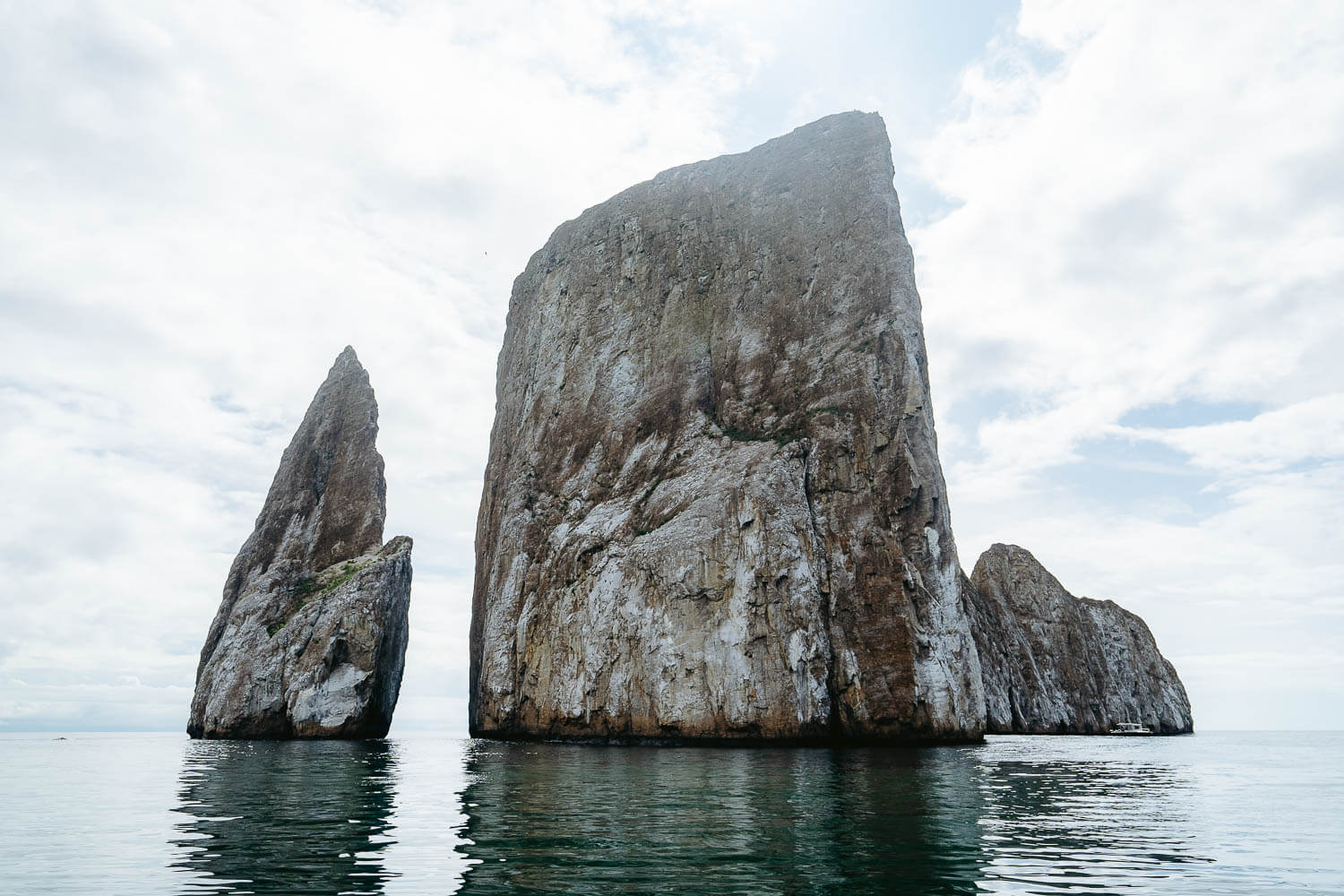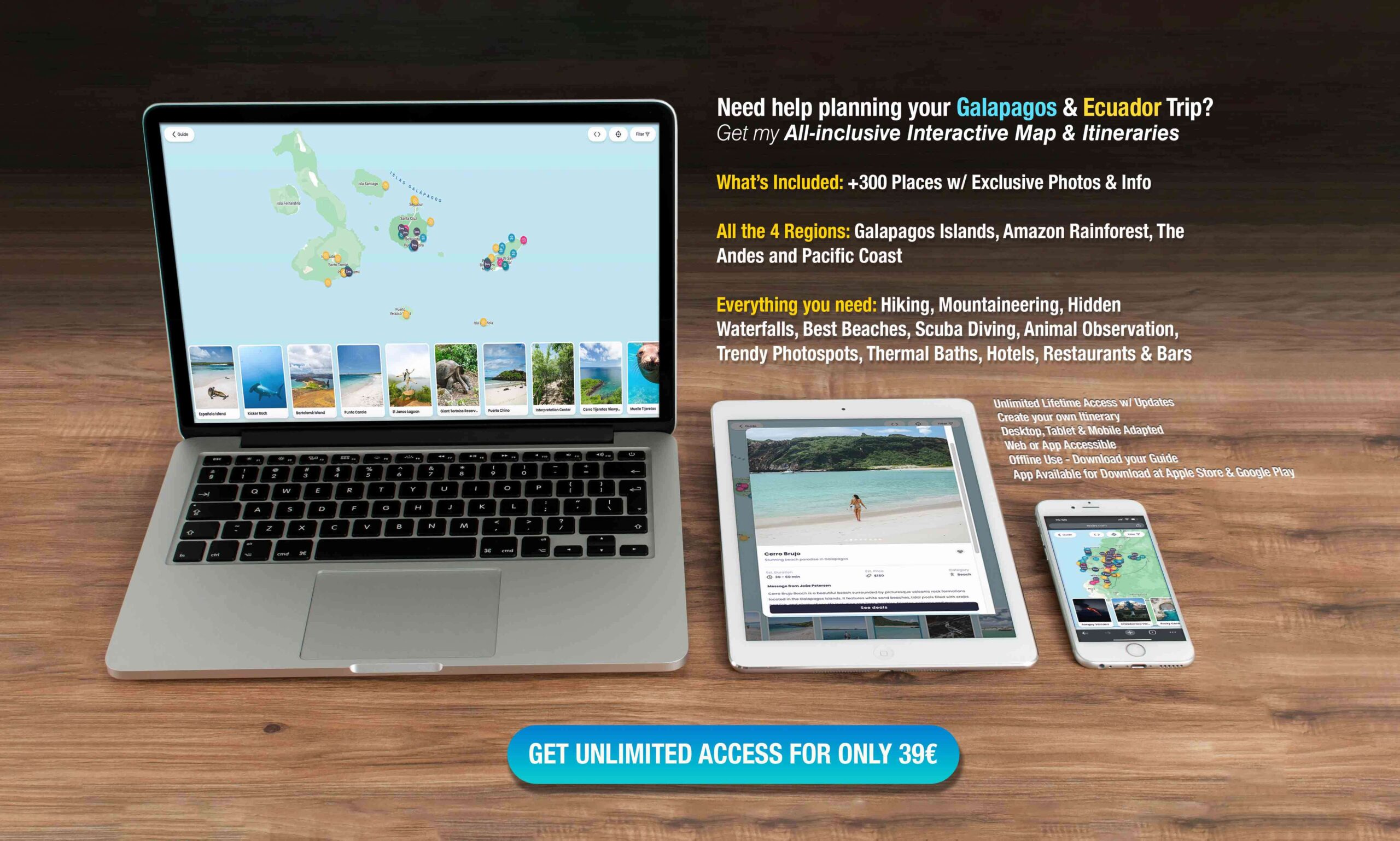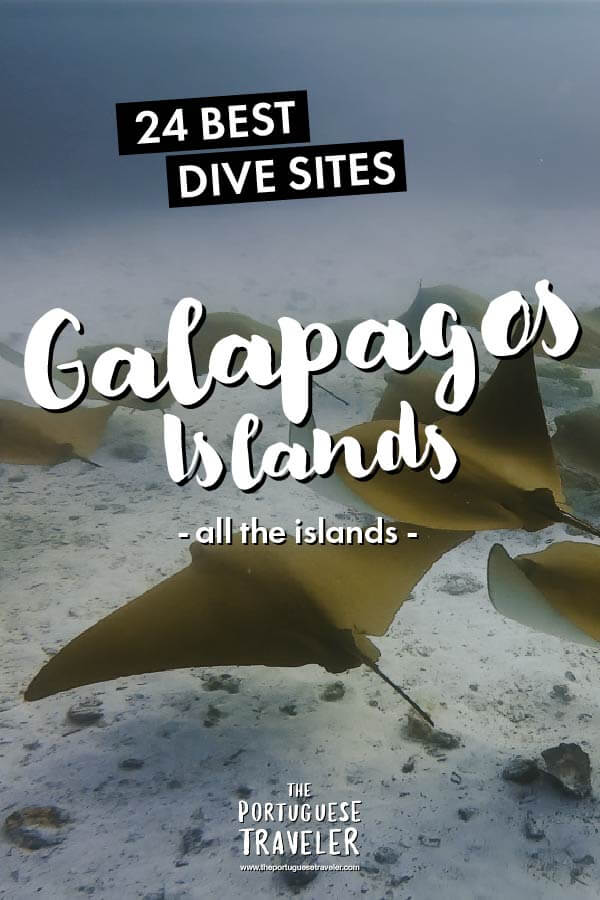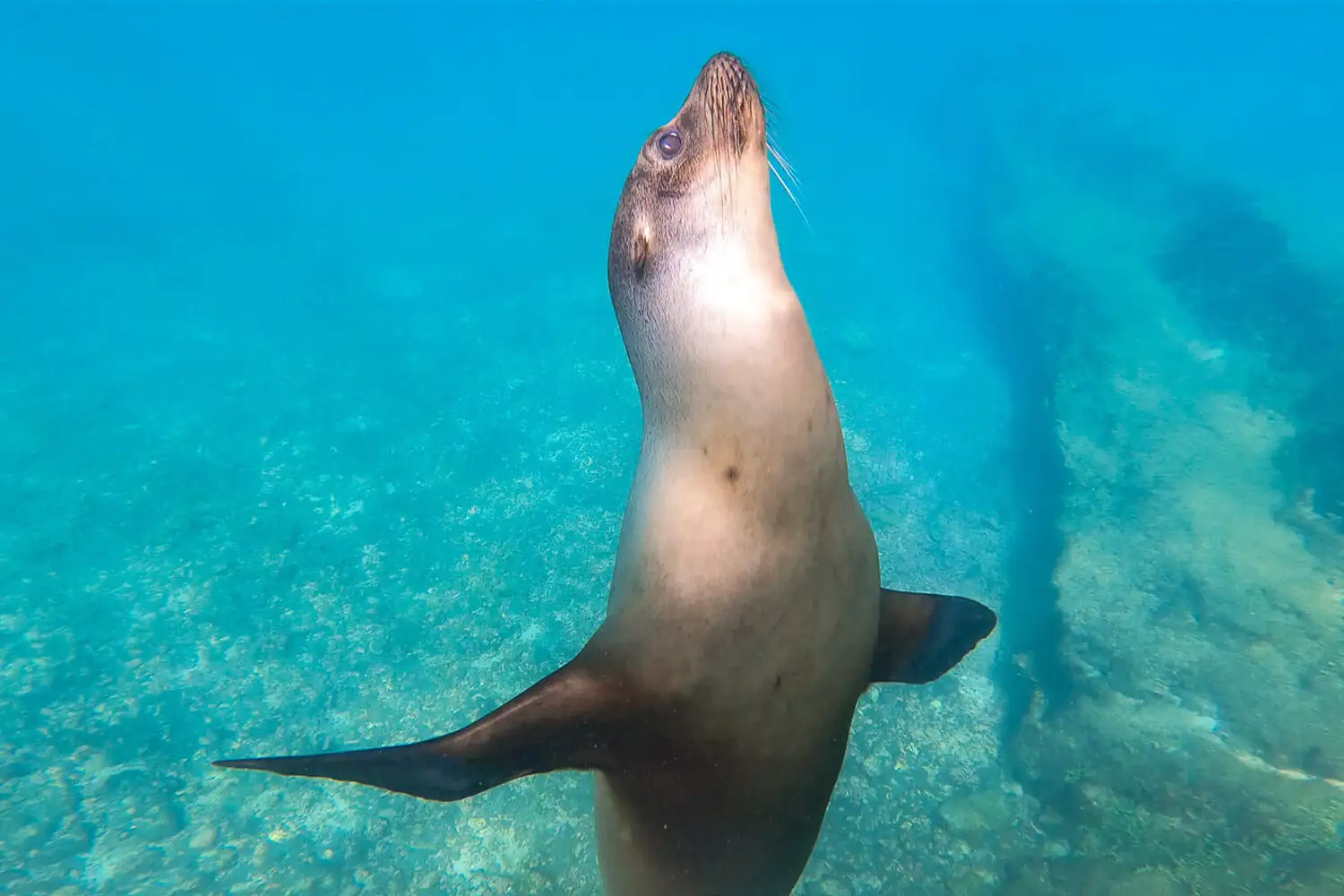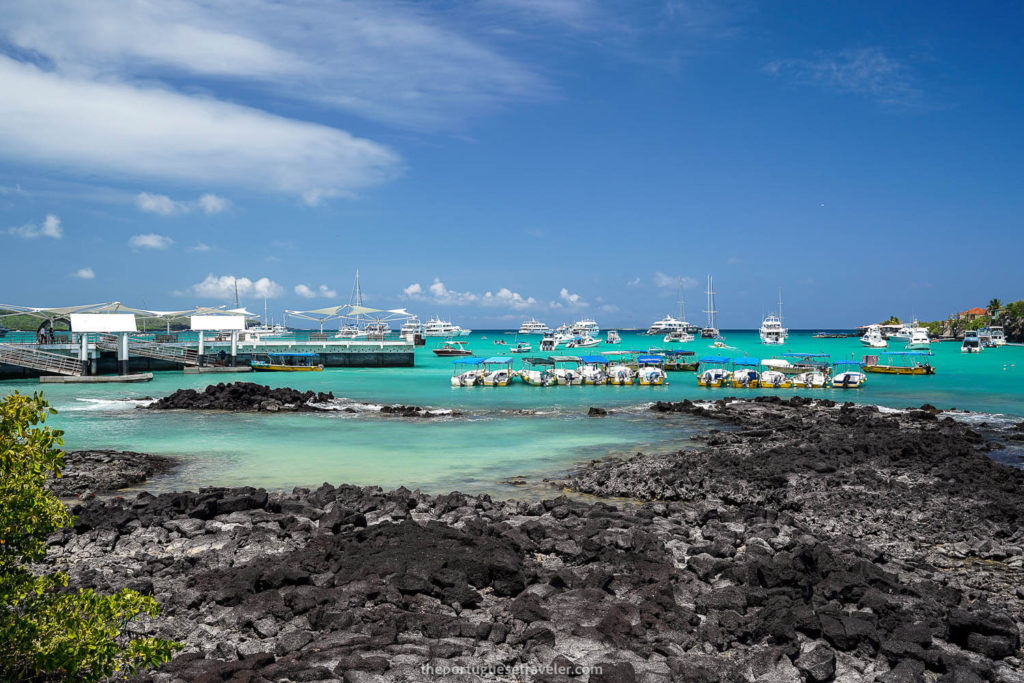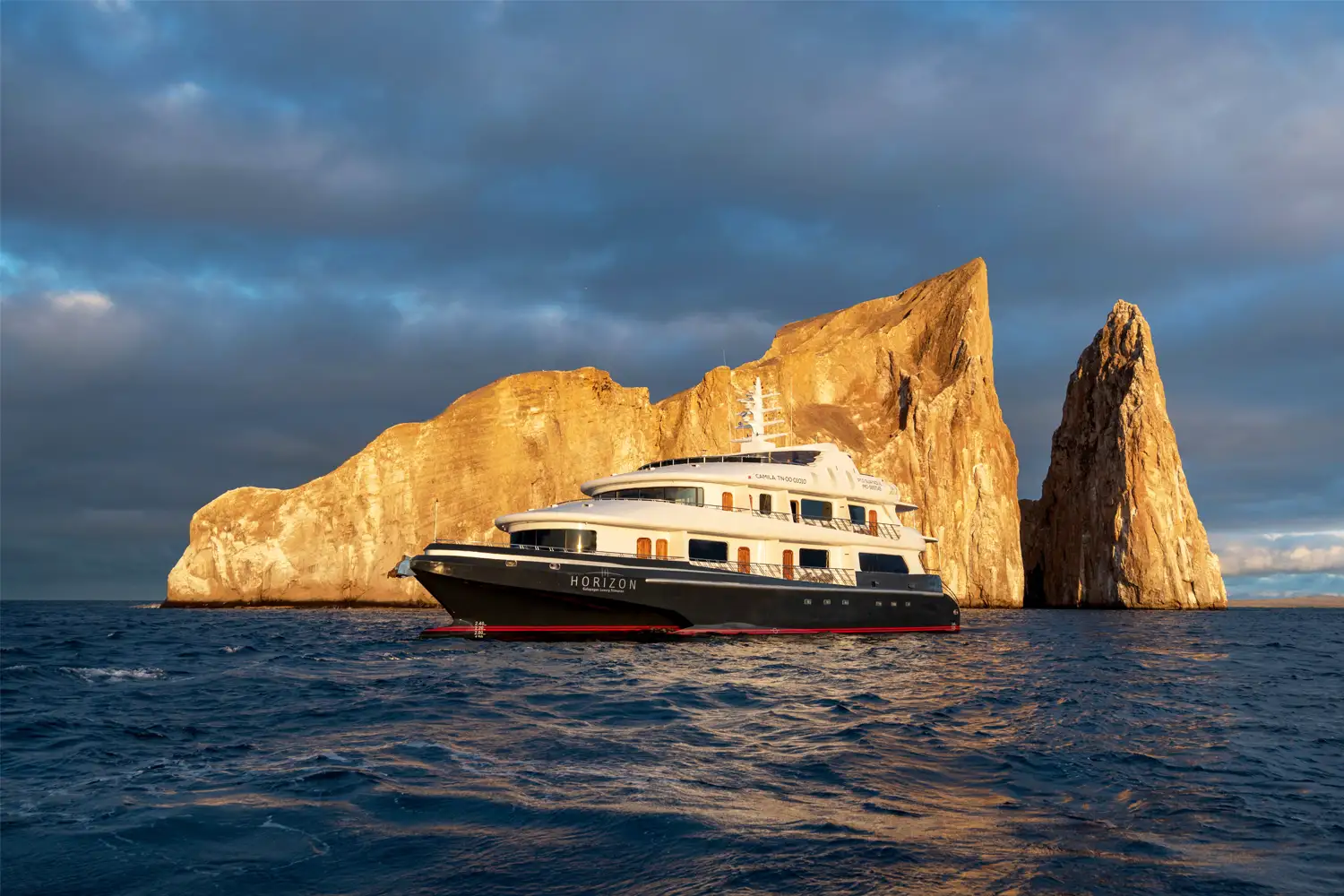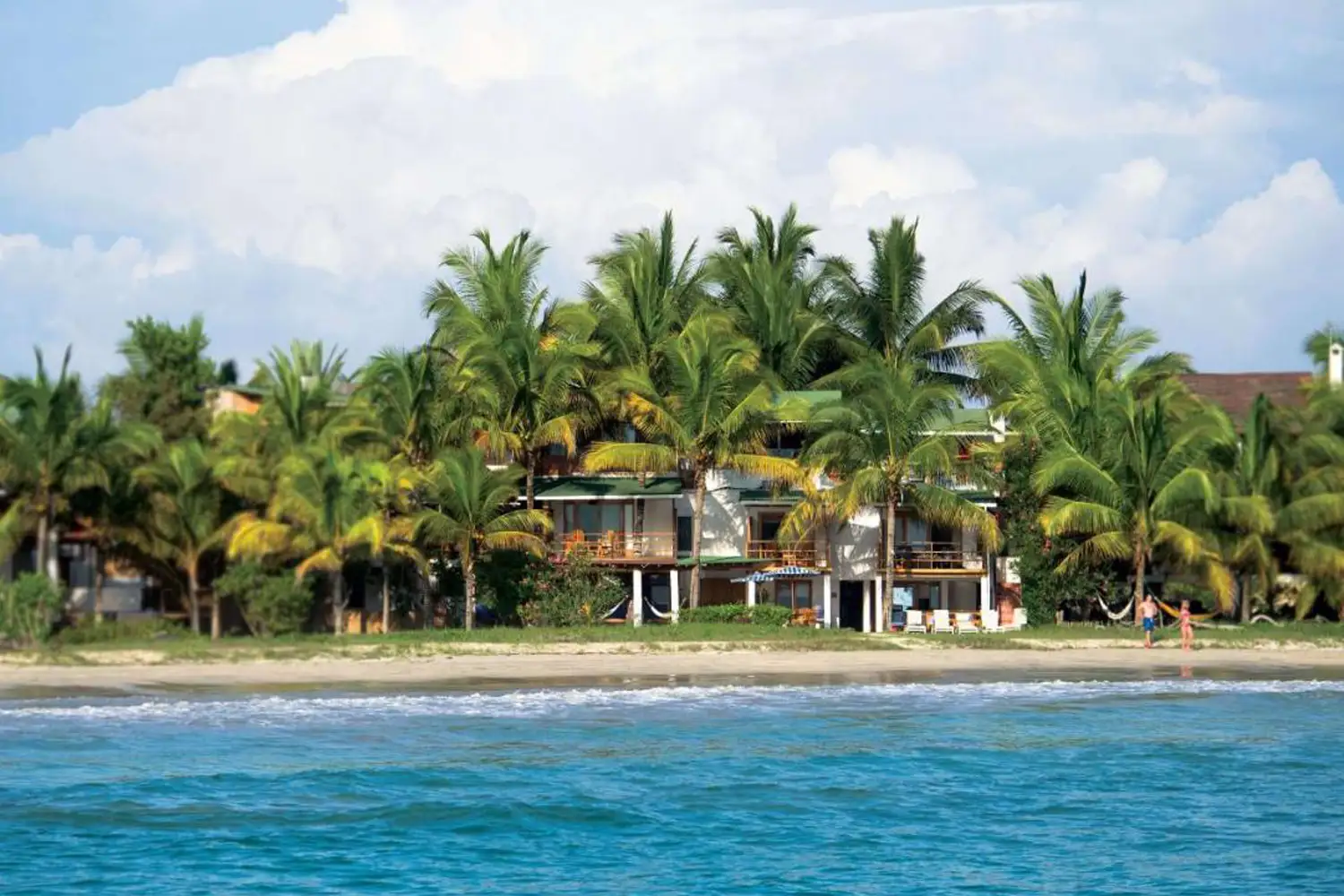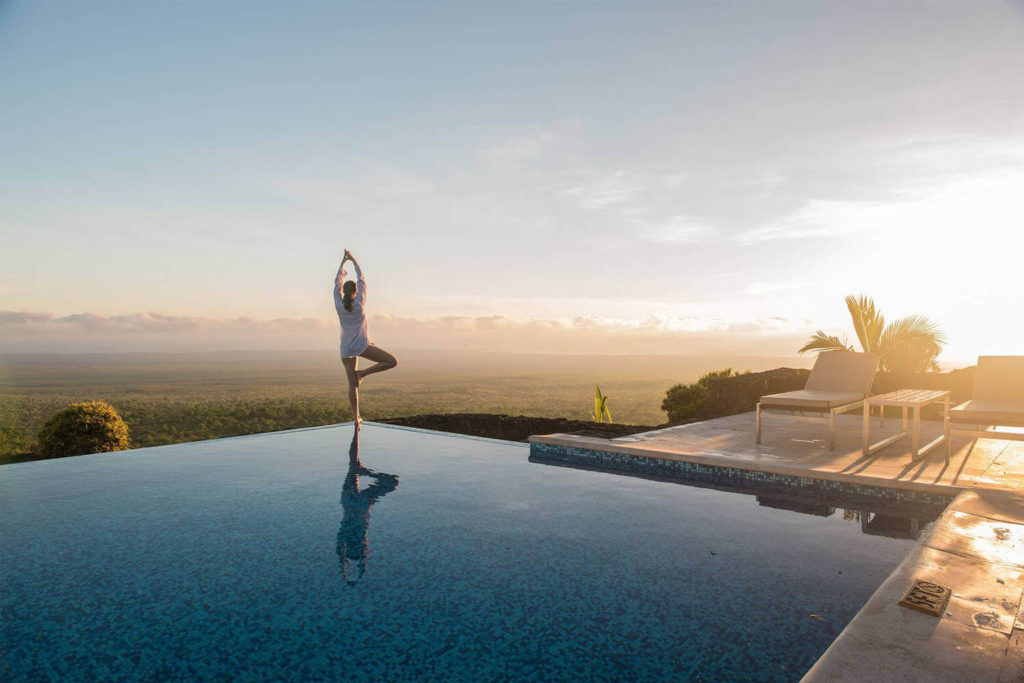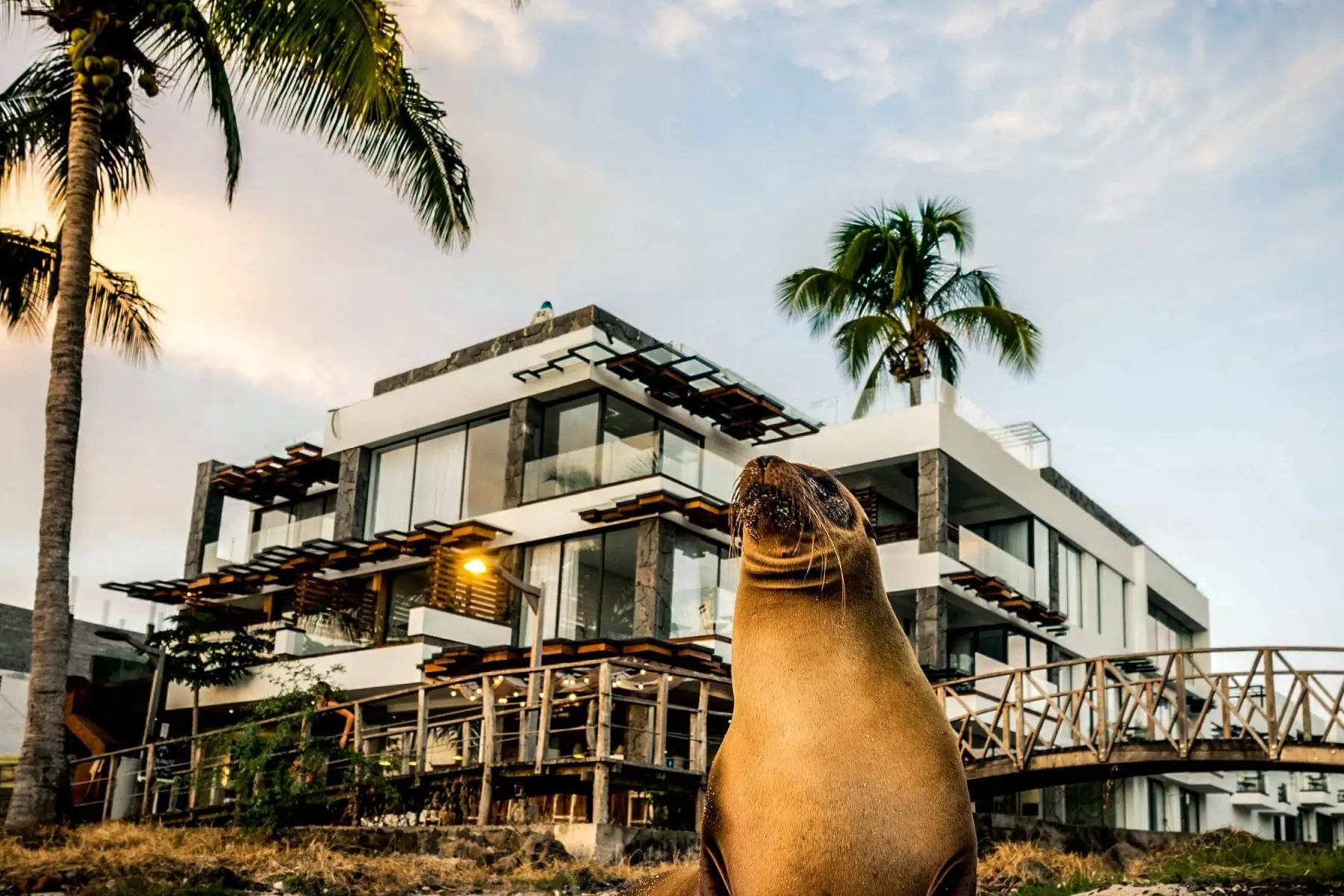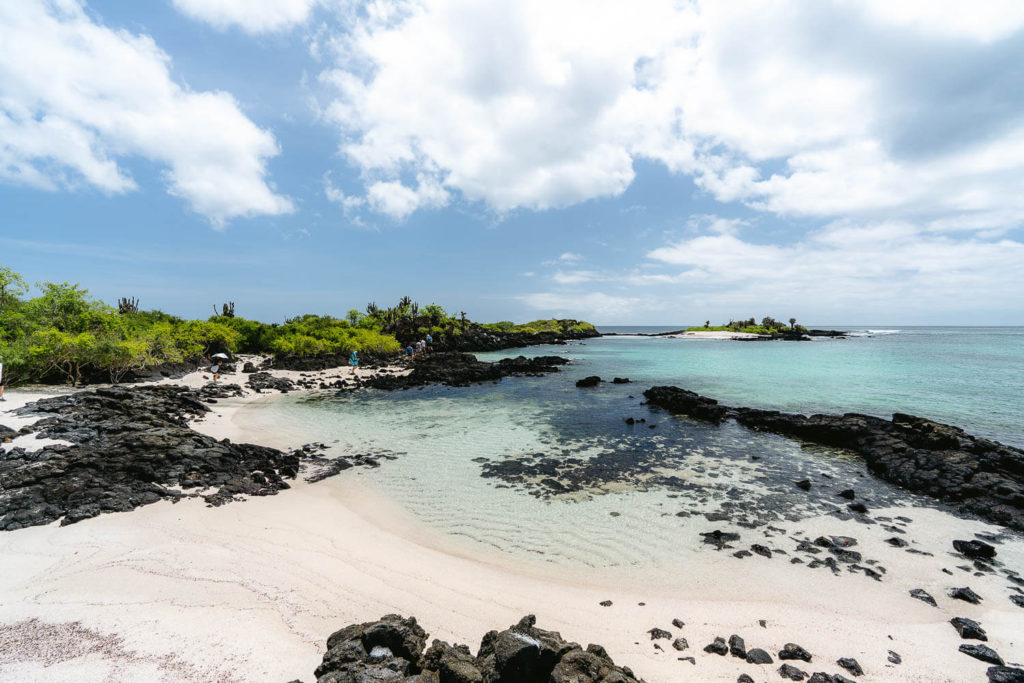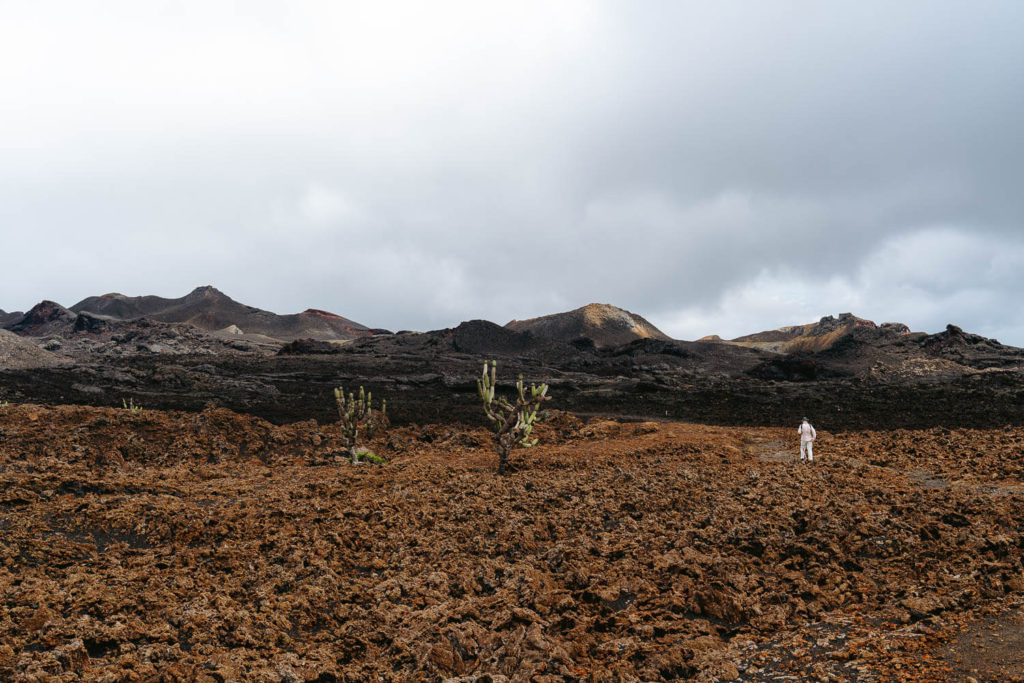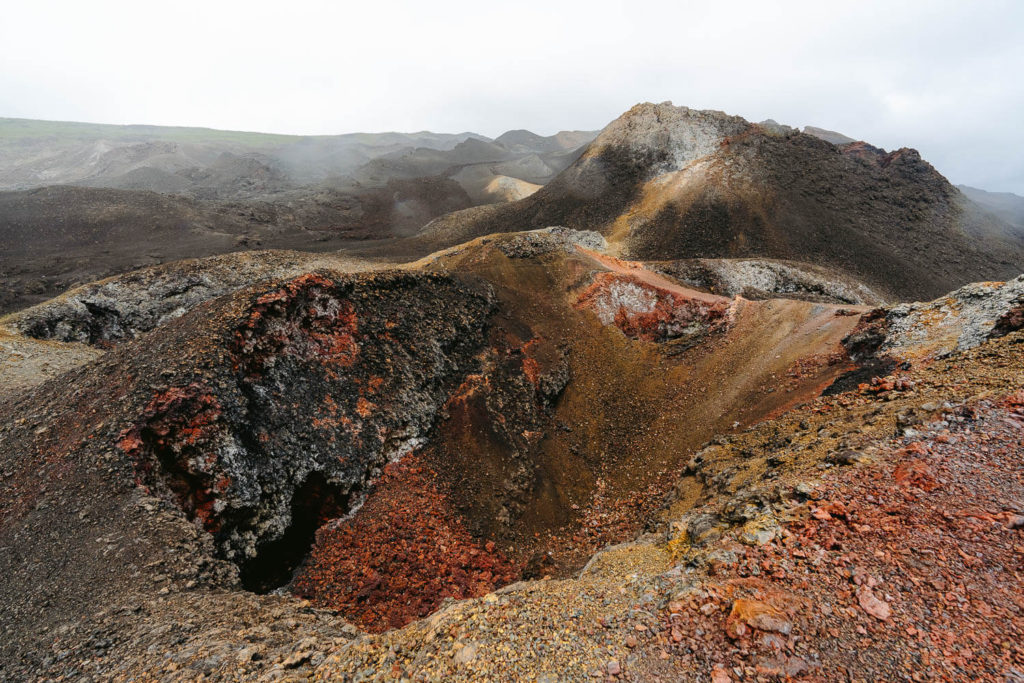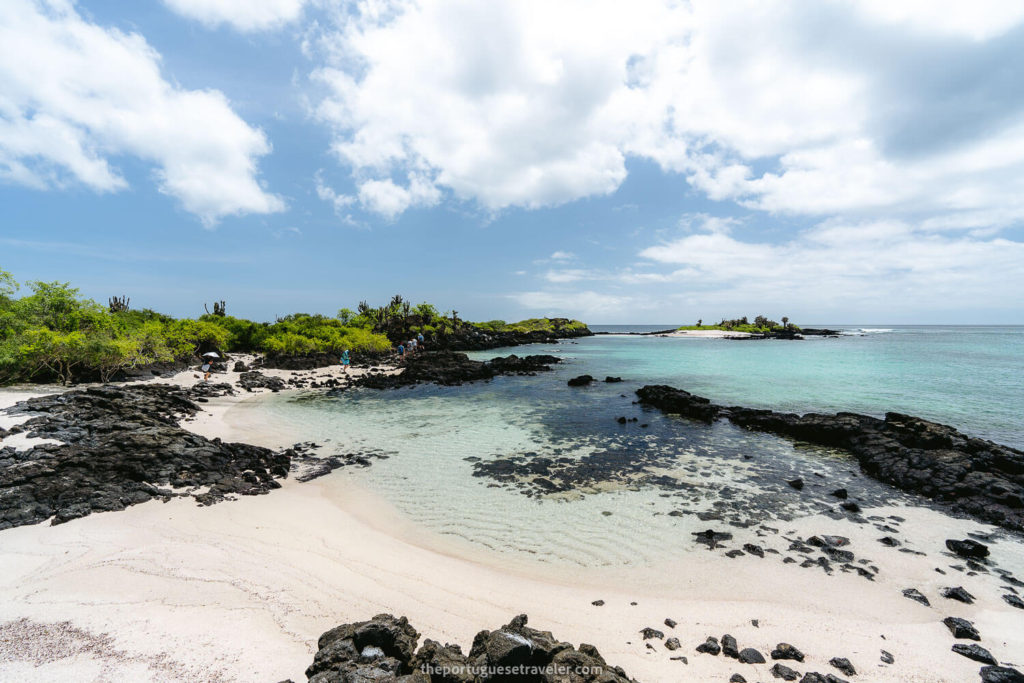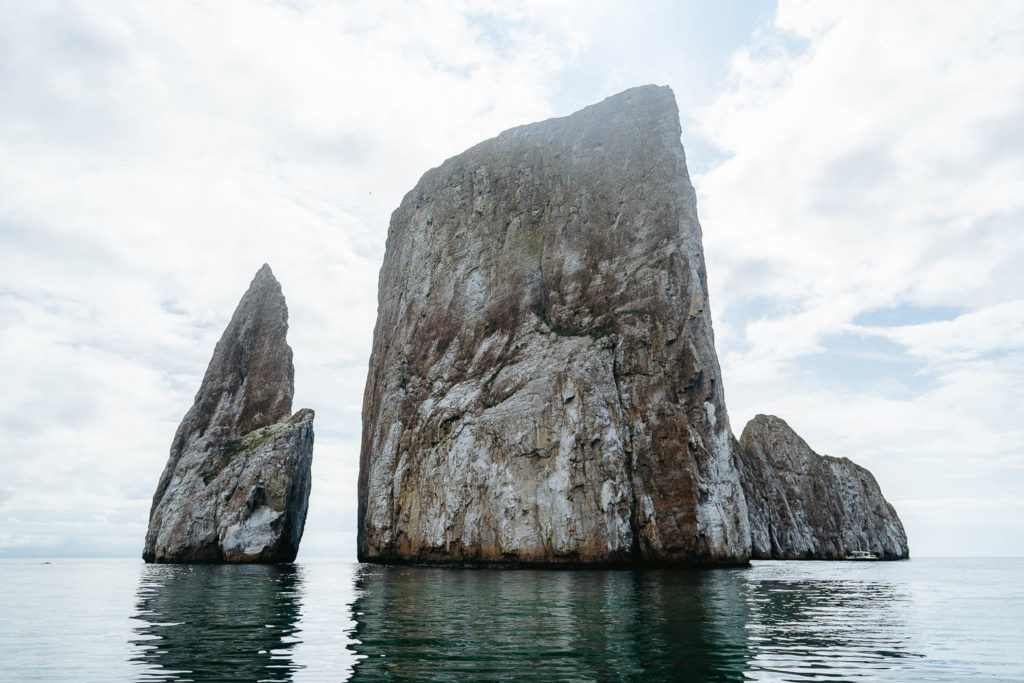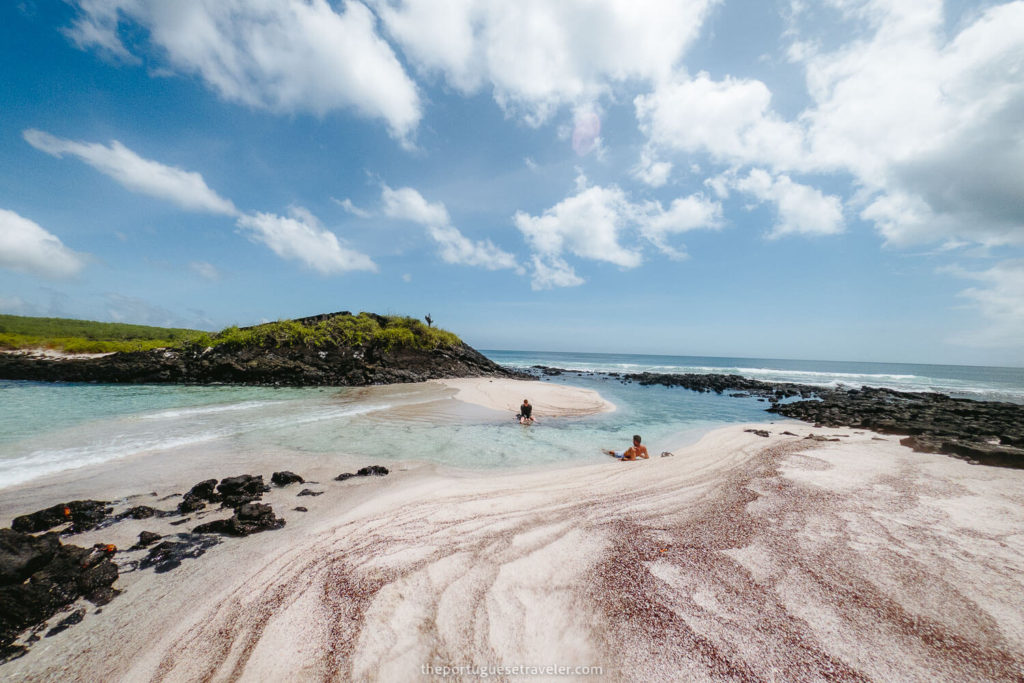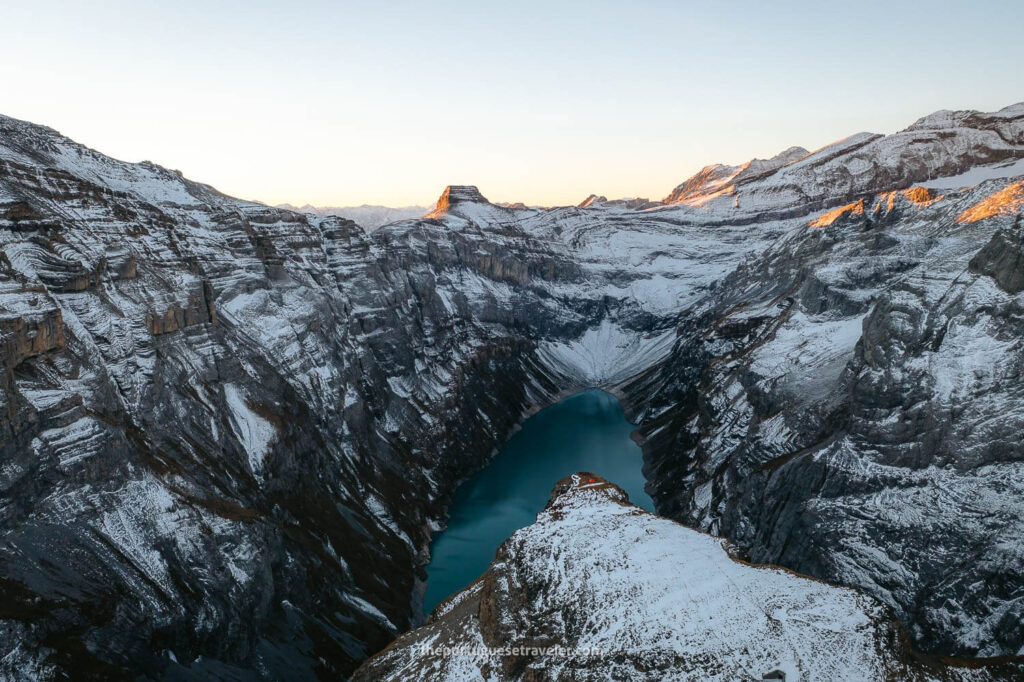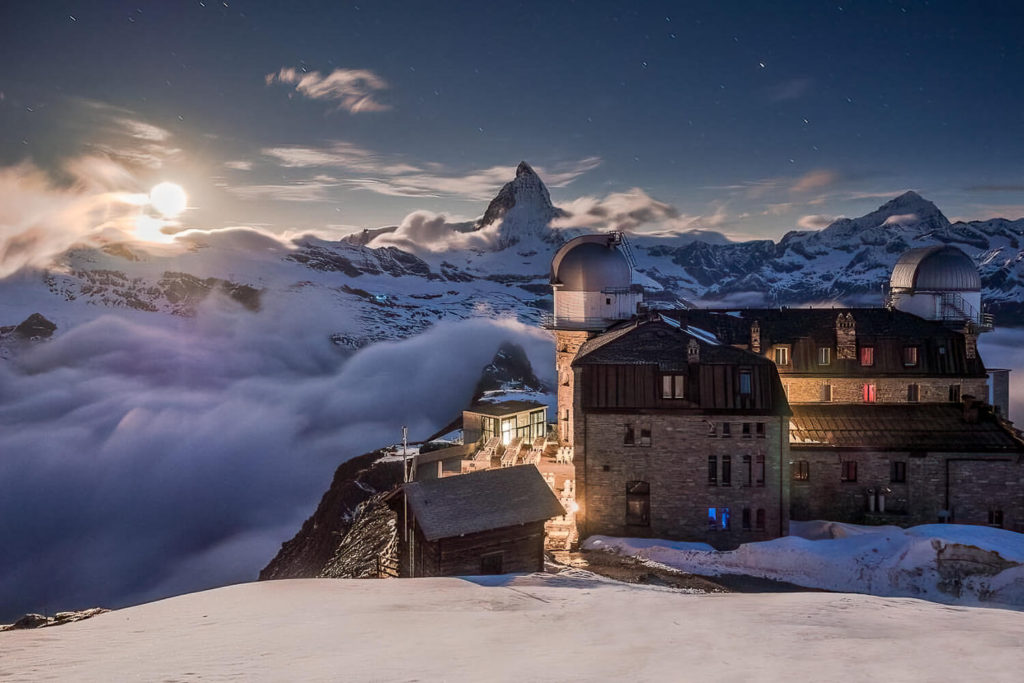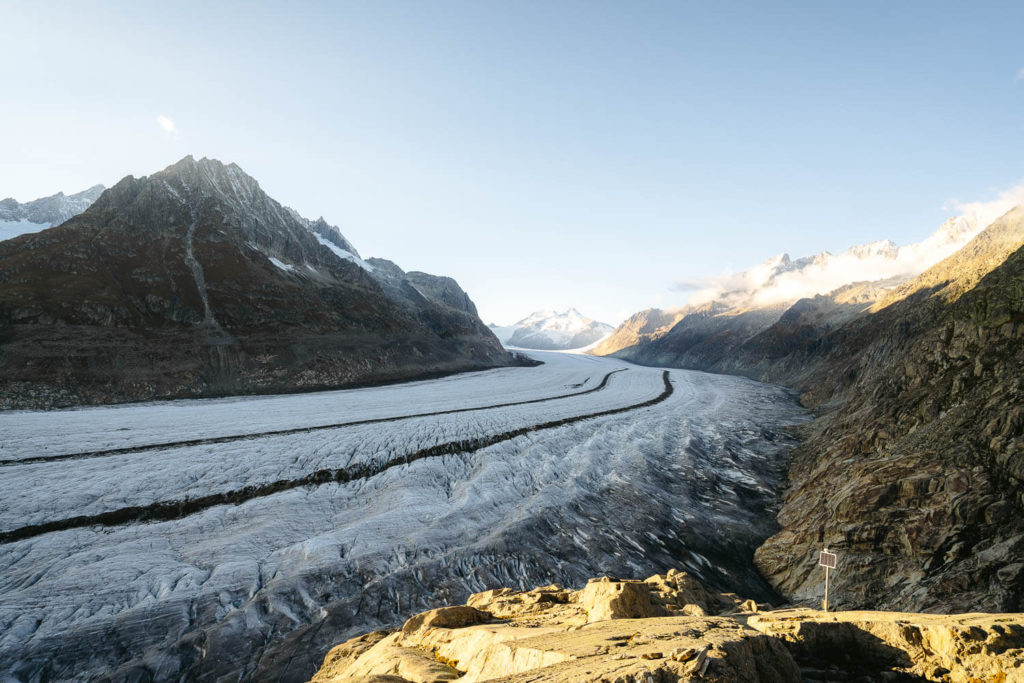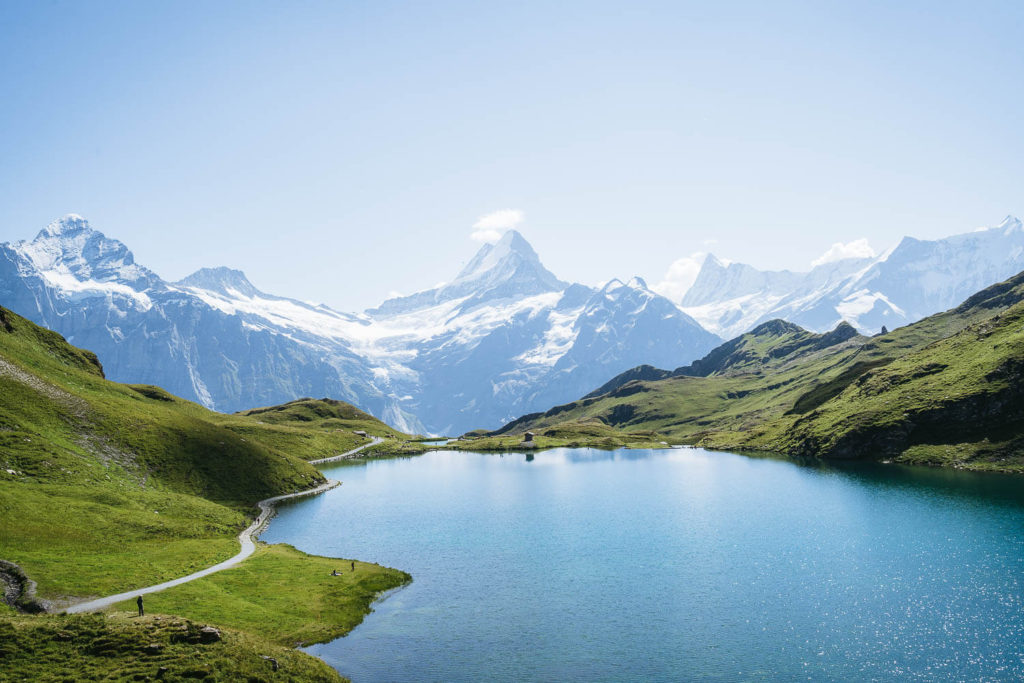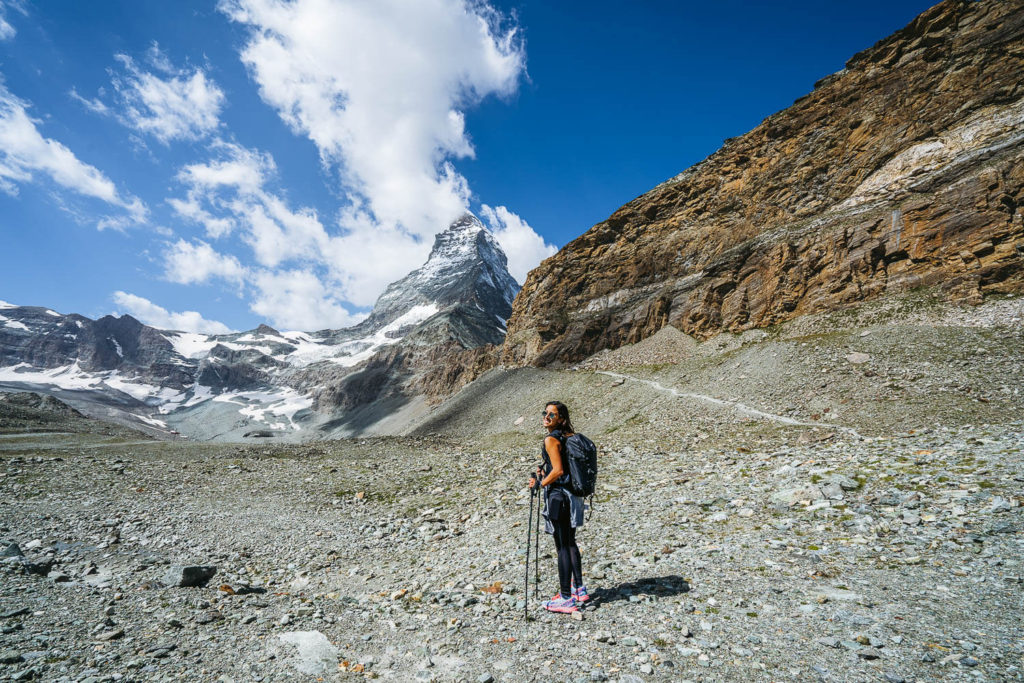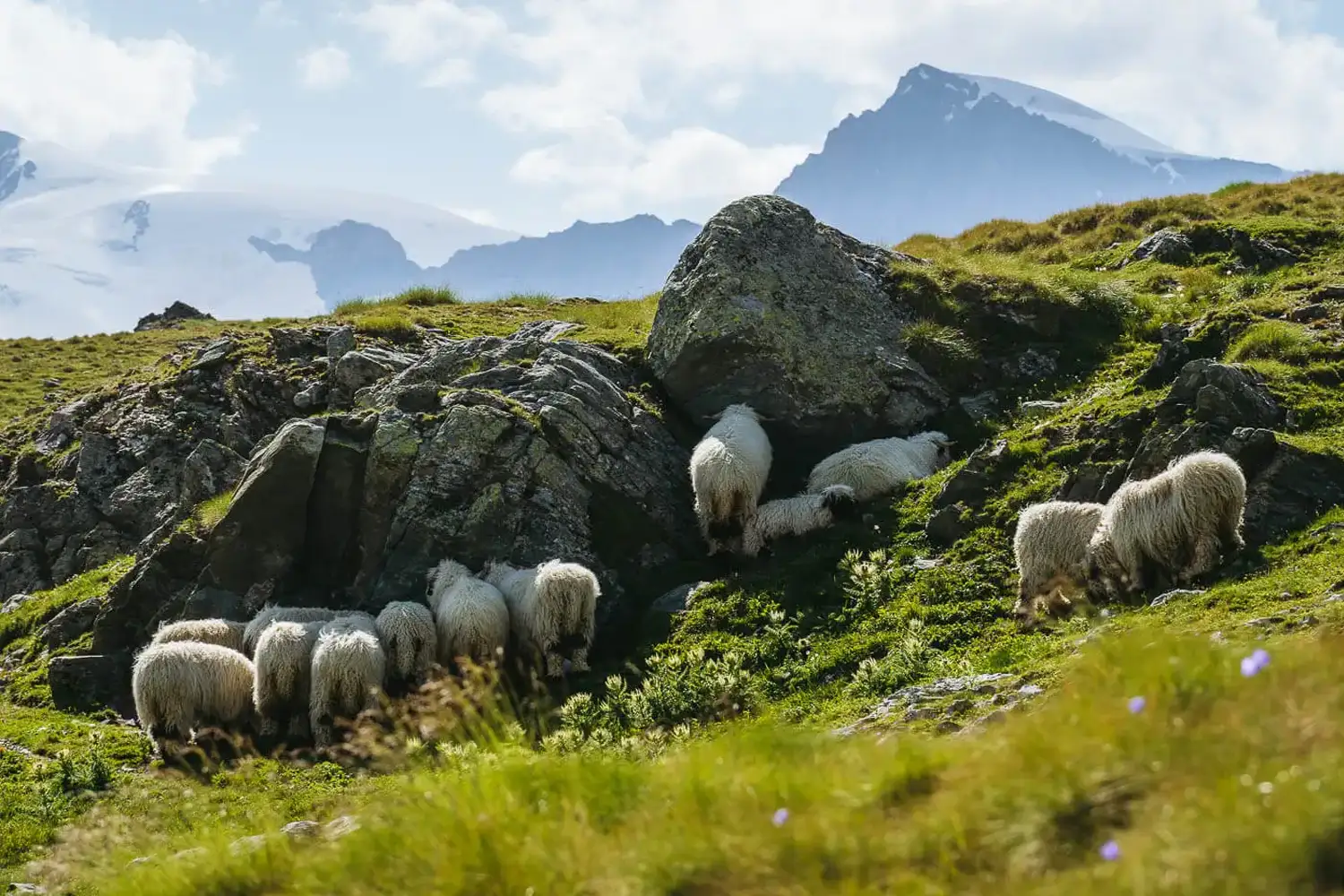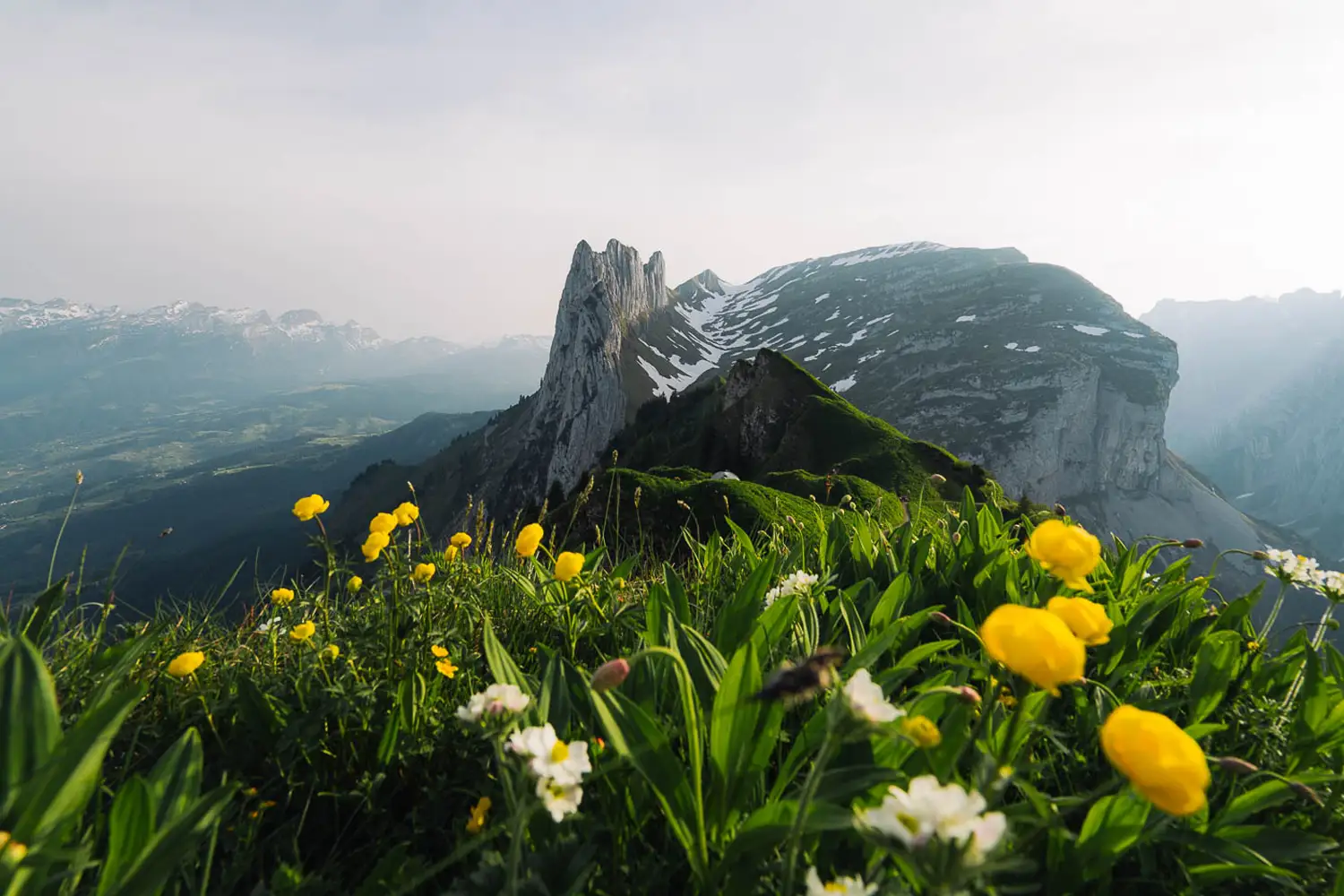- Last Updated: March 29, 2024
If you always dreamed of diving in Galapagos, this is the best compilation of dives you can do while in this marine paradise. From Liveaboards to land-based diving tours through all the islands.
Here I’ll list the 24 best dive sites on the archipelago. Some of the dives I’ve done them myself and I’ve written detailed articles about them, which I will link together. You will see hammerhead sharks, Galapagos sharks, eagle and manta rays, turtles, sea lions, marine iguanas, and with luck whale sharks!
There are 7 dive sites starting from San Cristobal island, 9 from Santa Cruz, 1 from Isabela, and 7 only doable as part of liveaboard experiences (diving in Fernandina island, the upper part of Isabela, and the famous Darwin & Wolf islands).
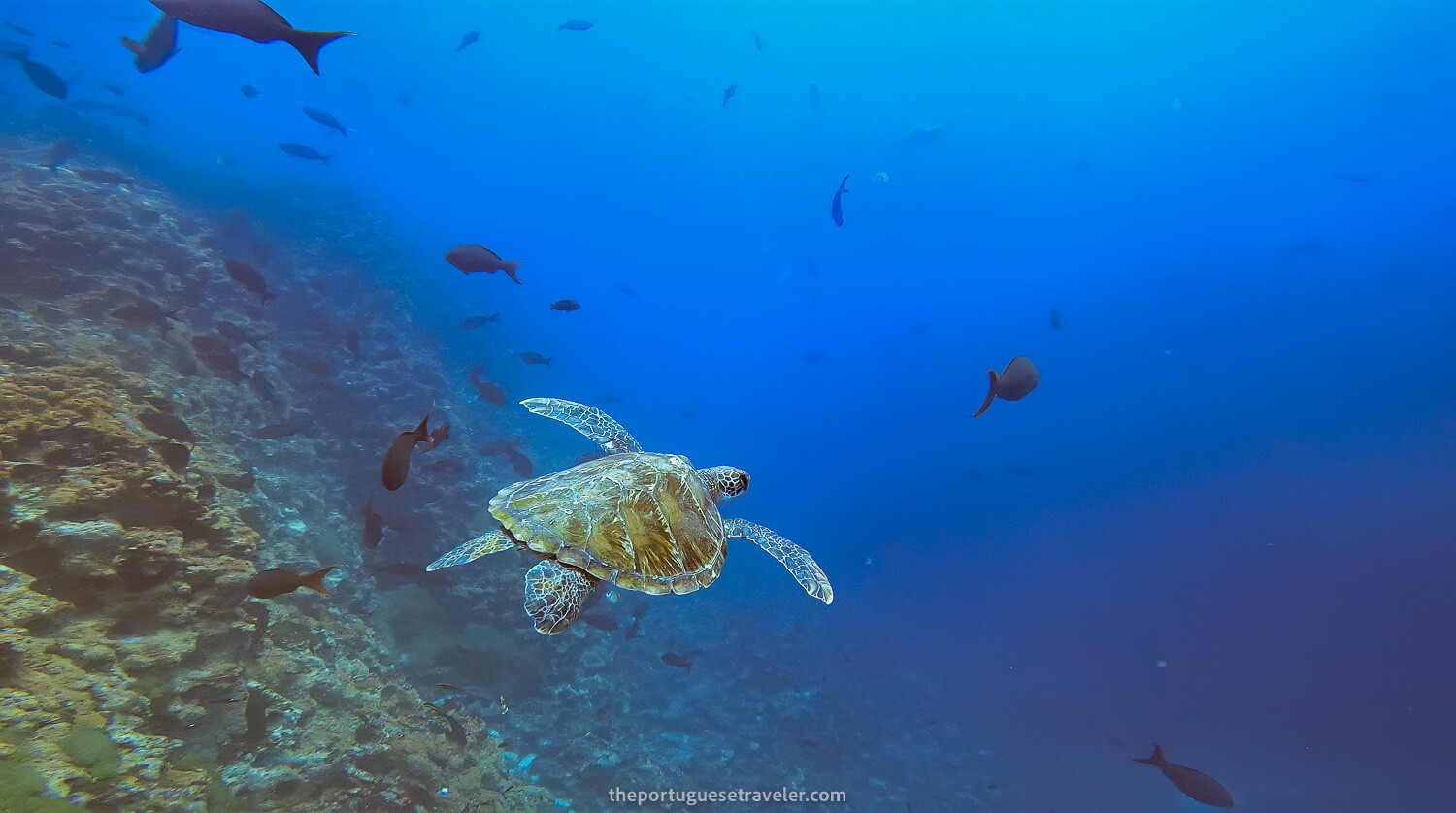
NAVIGATION MENU
CHOOSE YOUR DIVE SITES
DIVING IN GALAPAGOS
GENERAL INFO
All the Galapagos islands are part of the Galapagos National Park, and therefore there are a number of things you should know:
- Most of the activities have to be done on a tour with a Naturalist guide.
- All the agencies have the same prices (although you can barter if you book more than one tour).
- Most beaches have opening and closing times (turtle nesting reasons).
- You should book your tour at least one day in advance (or you might risk not having a place on the best ones).
- Bring Seasickness Medication for the tours on the water.
- Always use strong sunscreen (Sun in the Equator line burns more).
- Have mosquito repellant with you, especially at sunset. There are horseflies in the Galapagos.
- You can’t fly a drone here unless you have a special permit from the National Park.
- You can’t rent a motorcycle or a car, everything has to be done by taxi, bus, boat, bicycle, or on foot.
- You can’t and shouldn’t touch the animals on the island.
DIVING IN GALaPAGOS
SAN CRISTOBAL ISLAND
1. KICKER ROCK
If you always wanted to try scuba diving, diving in Galapagos might be the coolest place to start. Kicker Rock is the most famous dive in San Cristobal and the second most famous one in the entire archipelago (only topped by Darwin and Wolf’s liveaboard).
It’s not a beginner’s dive site but you can do some of the other dives I recommend underneath to start your adventure. Here, if you’re lucky and you’ve good visibility you can find dozens of hammerhead sharks, eagle and manta rays, Galapagos sharks, turtles, everything literally.
If you’re not a diver or you’ve little experience with currents, you can go for a cheaper price on the same boat as your friends and snorkel here. The snorkeling group on my tour actually saw more things than we did. So it’s a spectacular tour in both ways.
View the full blog post here: DIVING IN KICKER ROCK
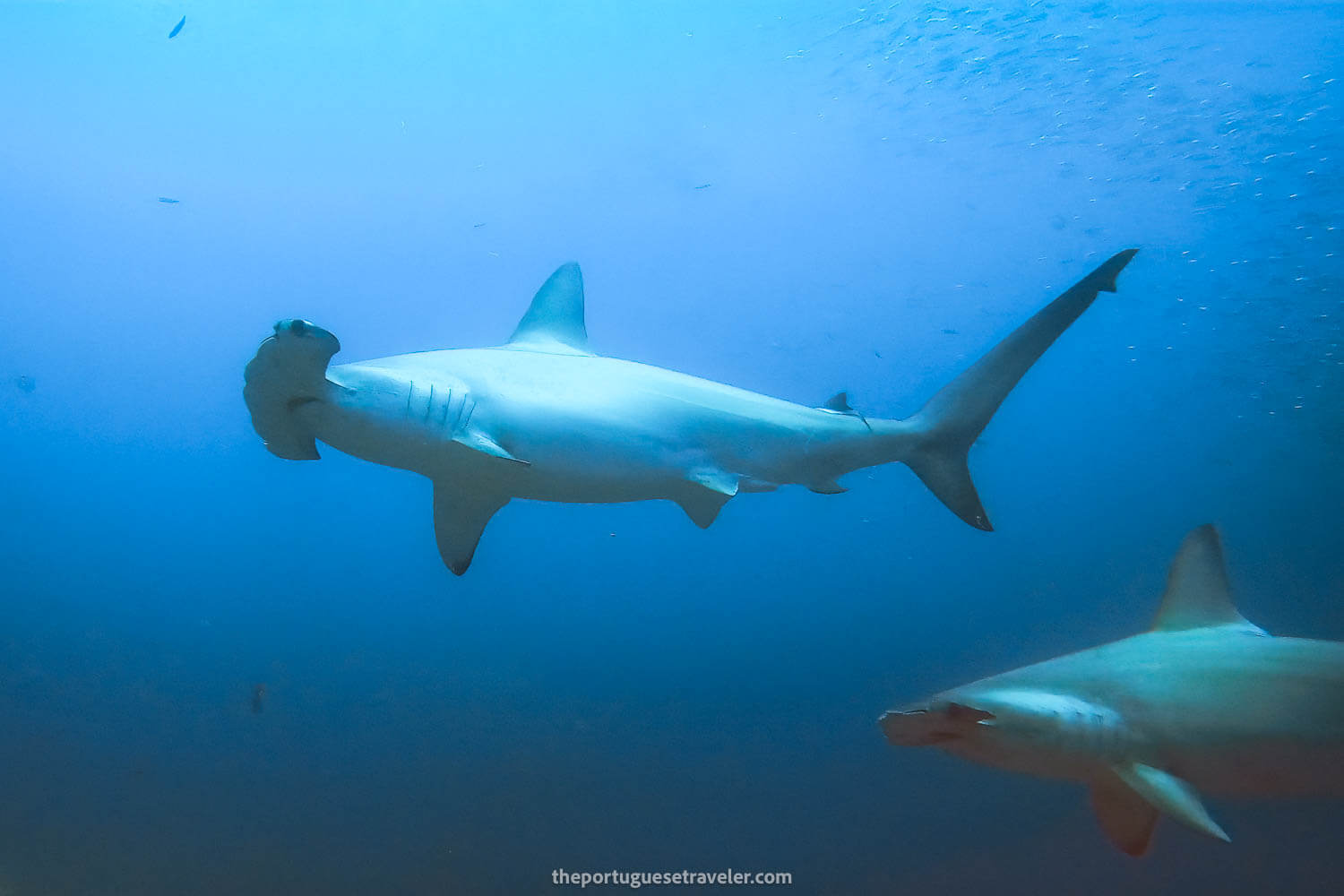
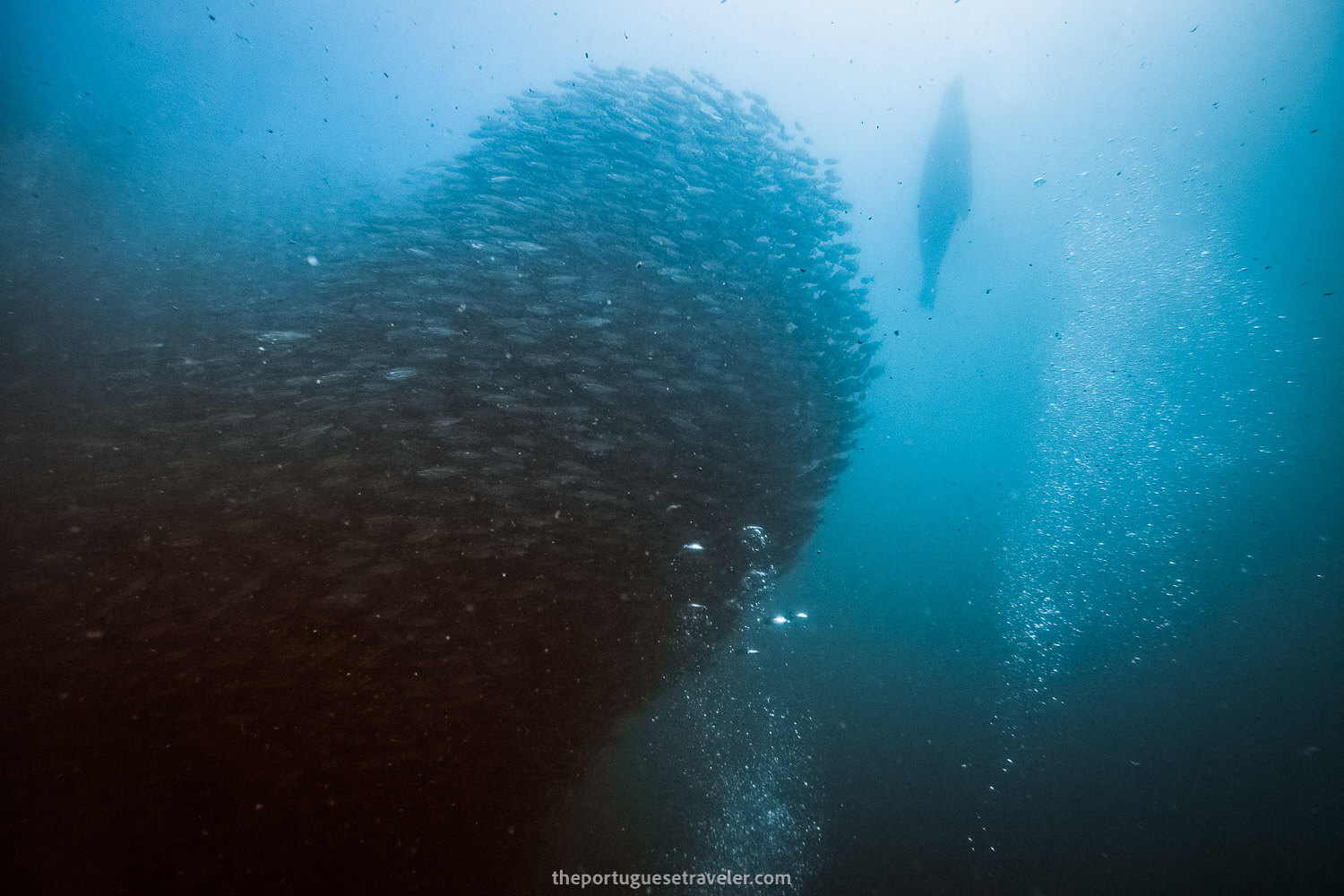
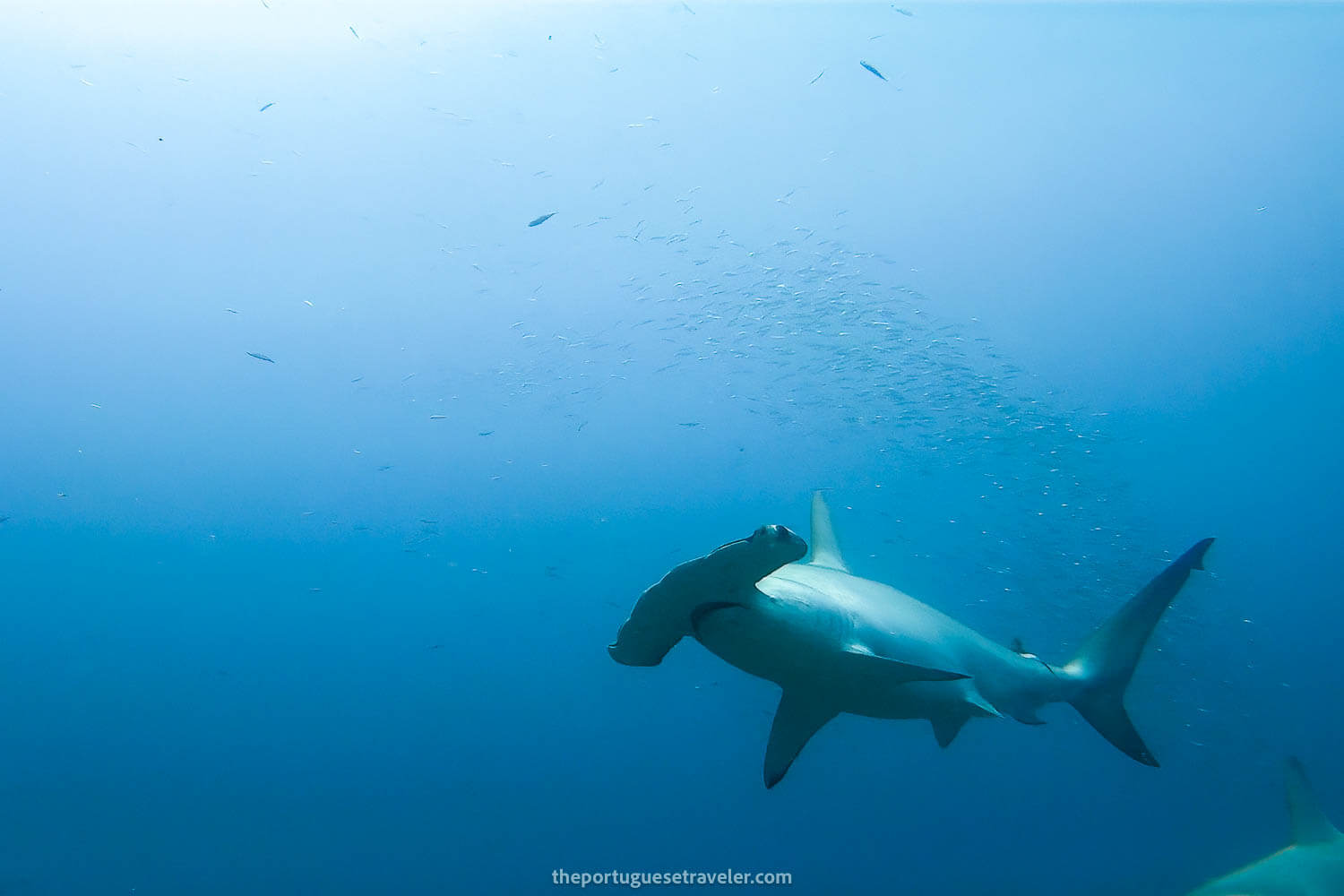
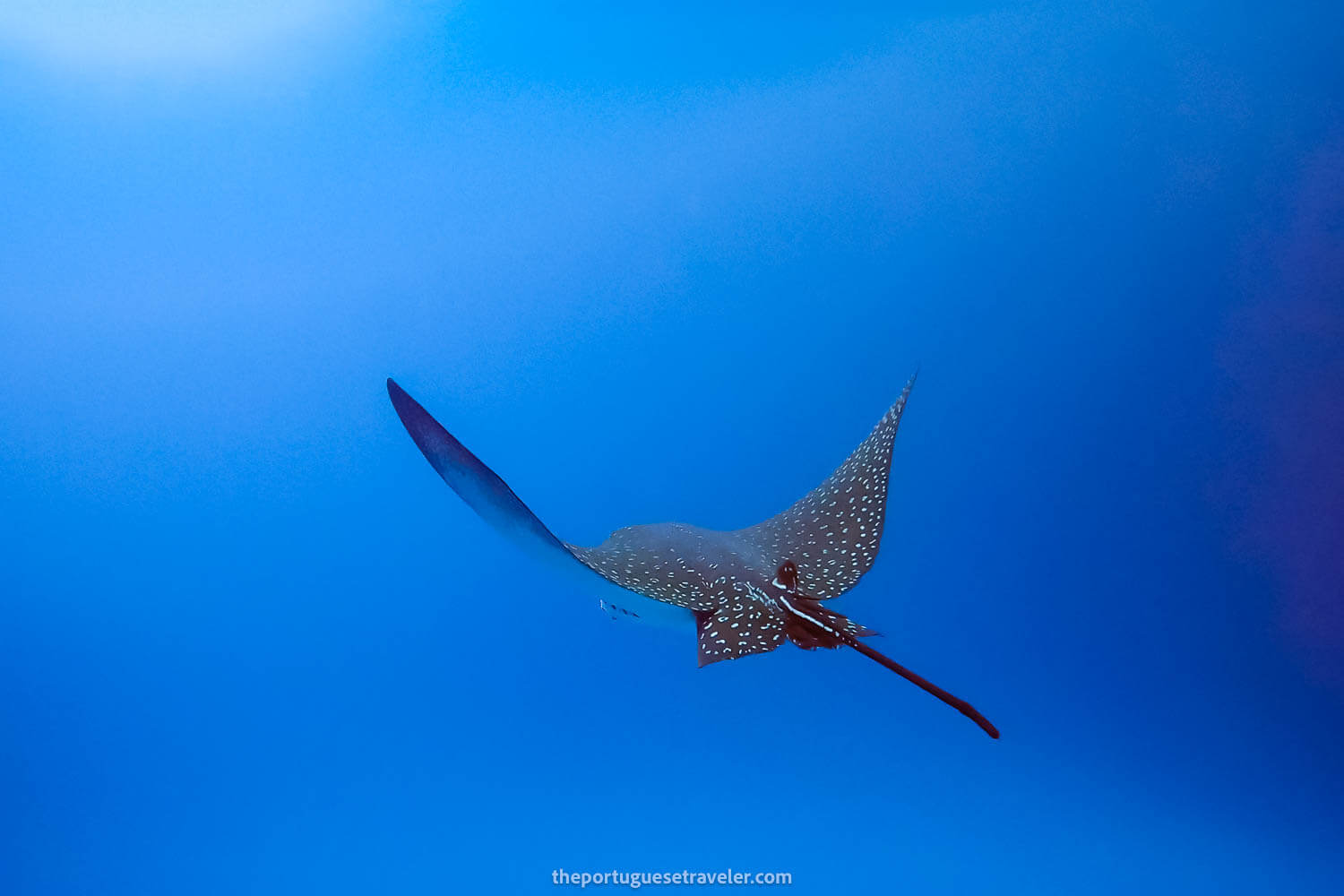
2. CARAWA SHIPWRECK AND TIJERETAS BAY
Discover the wonders of Carawa SS Wreck, an Australian transport ship that found its resting place in 1920, stretching approximately 100 meters in length.
Before delving into the intriguing depths of the wreck, divers begin their journey with a check dive at Tijeretas Bay, a natural lagoon boasting crystal-clear waters and inhabited by playful sea lions and graceful green sea turtles.
View the full blog post here: DIVING IN CARAWA WRECK AND TIJERETAS BAY
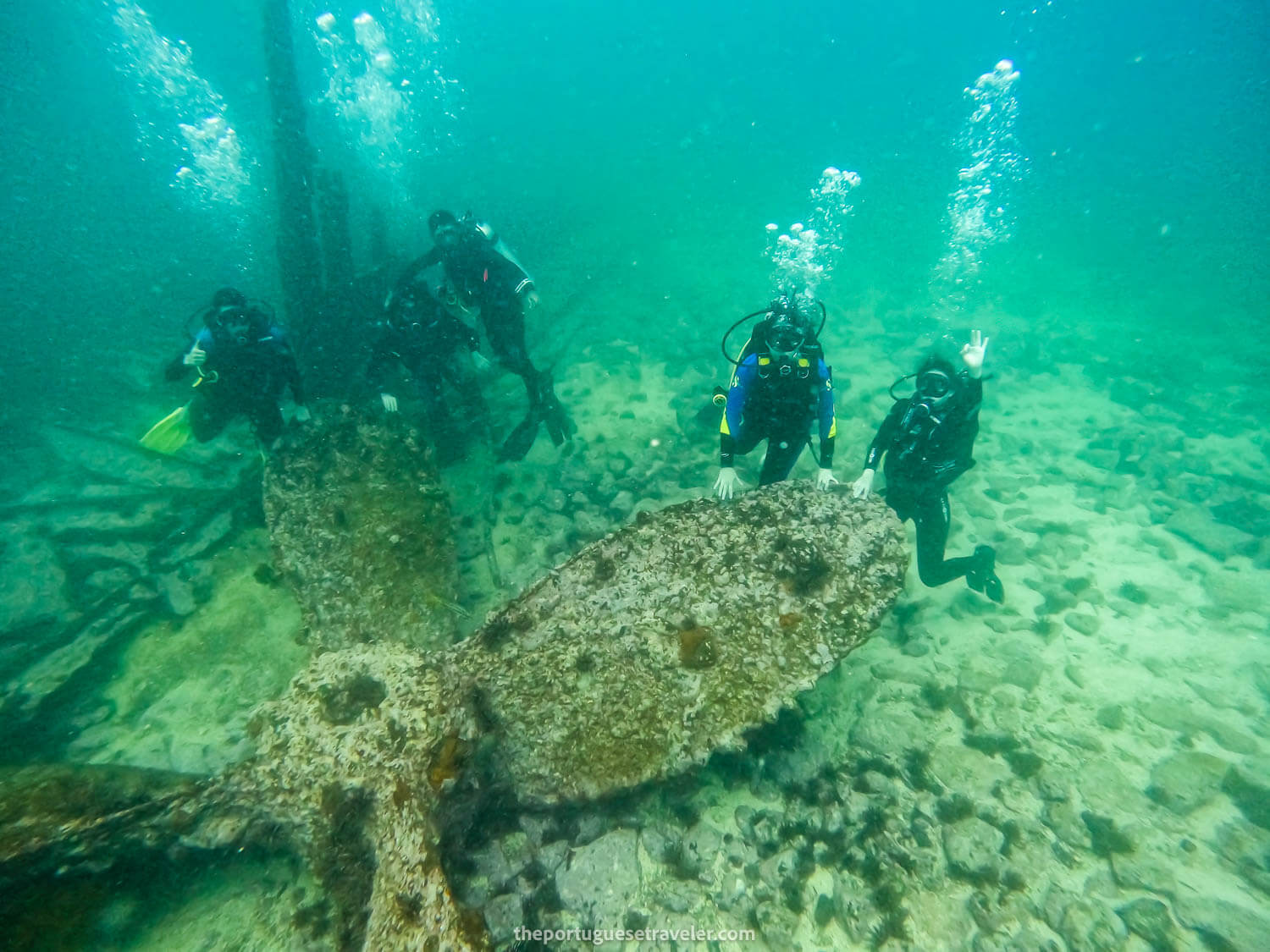
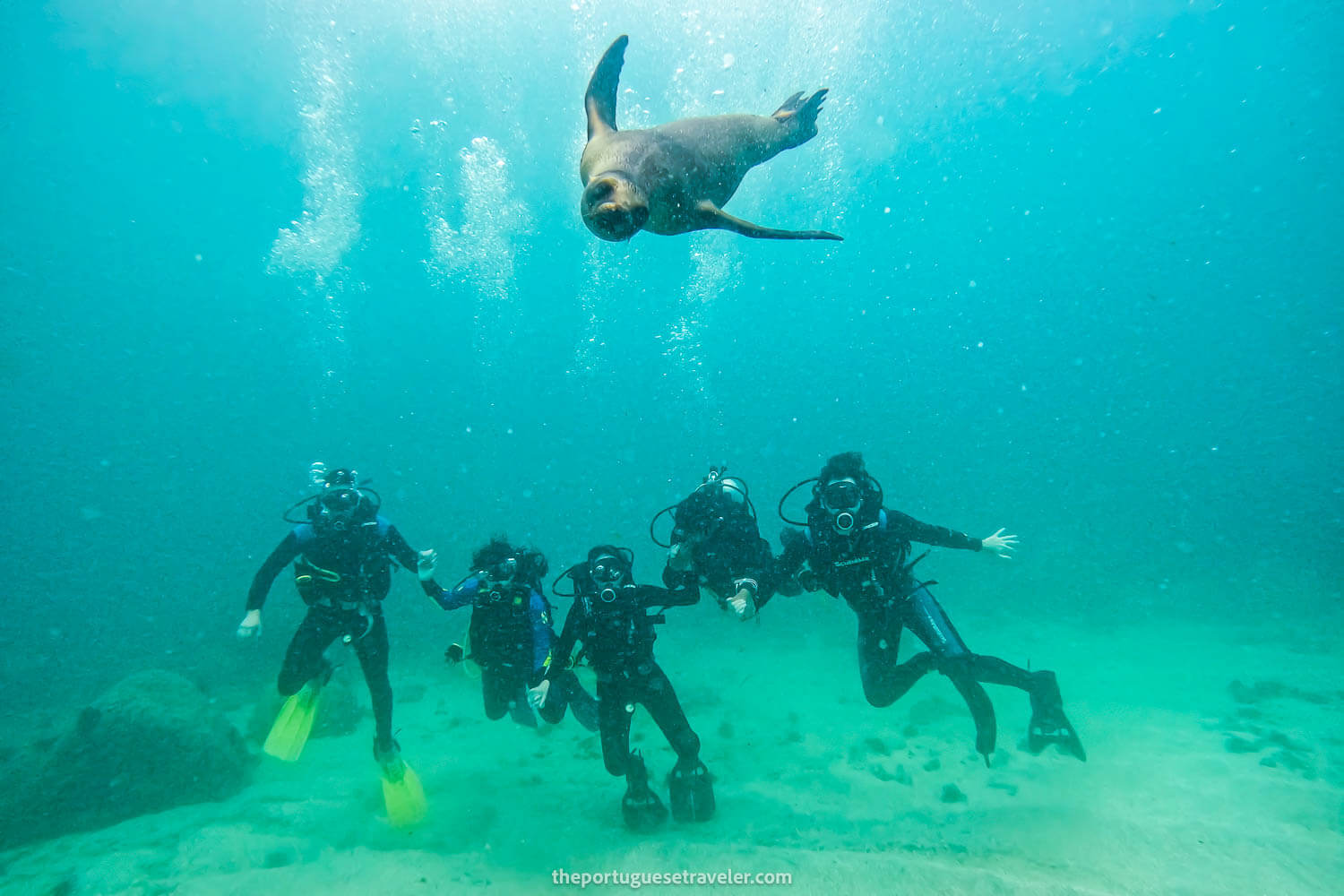
3. WHALE ROCK
Another possible diving tour you can do on San Cristóbal is to Whale Rock whose name comes from its similarity to a whale coming to the surface.
It’s a little less exciting than Kicker Rock but you can still find pompano fish, jacks, stonefish, sea turtles, anemones, rays, and sometimes sharks.
Check the Whale Rock dives on Planet Ocean Galapagos’s website.
4. PUNTA PITT
If you’ve done the 360 Tour then you probably recognize this place. It’s where you do the birdwatching on that tour. It is the northeasternmost point of San Cristóbal and the turning point from the wild to the calm sea (protected by the island). It is therefore packed with marine life and birds.
On this tour, you have two dives or you can snorkel if you aren’t a certified diver. In the end, you go to Cerro Pitt hill for some birdwatching and inland exploring or just stay at the beach relaxing.
Check the Punta Pitt dive/snorkel trip on Wreck Bay’s website.
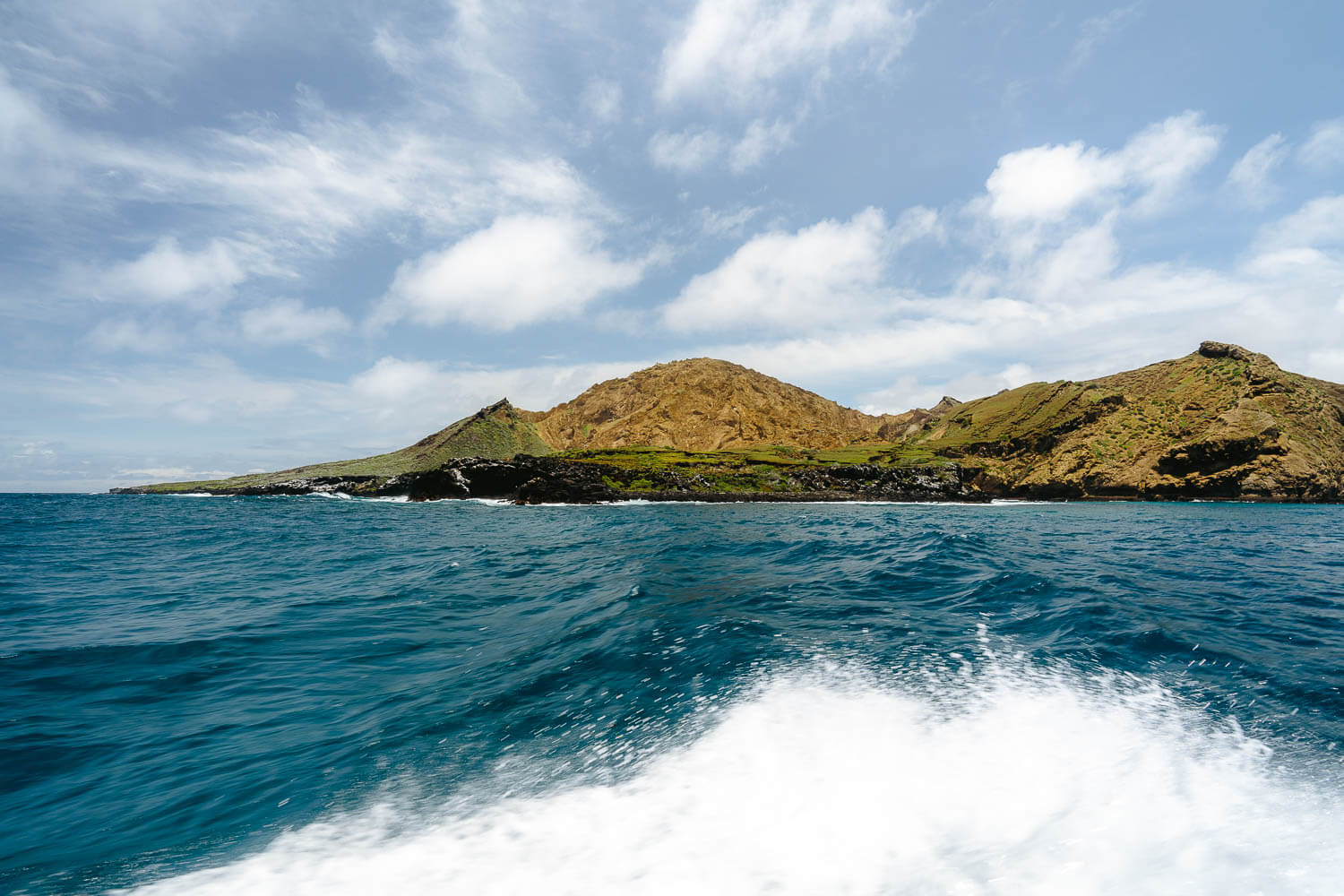
5. NIGHT DIVE IN SAN CRISTOBAL
A night dive in the Galapagos. This would also be on my top 3 list of dive sites in San Cristobal if I had known of its existence. Imagine all the life you see during the day here, in the water, diving in Galapagos, and multiplied by 100.
During the night the animals are much more active than during the day so you have the most chance of encountering special and rare animals on night dives. You will also see their true and vibrant colors due to your flashlight.
It’s amazing to dive at night. If you like diving this is definitely a thing you should do in San Cristobal.
Check the Night Dives on Planet Ocean Galapagos website.
The Most Complete Guide & Map of Ecuador
+300 Unique Places: Galapagos - Amazon - Andes - Coast
Unlock exclusive access to hidden gems and local insights with my guide! Your purchase fuels my dedication to providing free travel content and supports my passion for sharing the best of Ecuador. Plus, enjoy lifetime updates and personalized assistance. Let’s explore together!
6. ESPAÑOLA ISLAND
Española Island is home to many endemic species in the Galapagos. They only exist on this island. This is not one of the dive sites in San Cristobal but in Española island, however, you must depart from San Cristobal to come here.
It’s a day tour and it’s the only big island (not counting Santa Cruz island) you can visit on a day trip from San Cristobal.
Here you can find a special marine iguana with green and red coloration, a waved albatross colony (it’s their only breeding site in the world), the Española mockingbird, the Española lava lizard, sea lions, blue-footed boobies, and many other unique species.
There is also a part of the tour where you snorkel or dive in Gardner Islet and find many underwater wonders.
Check the Española dive on Wreck Bay’s website.
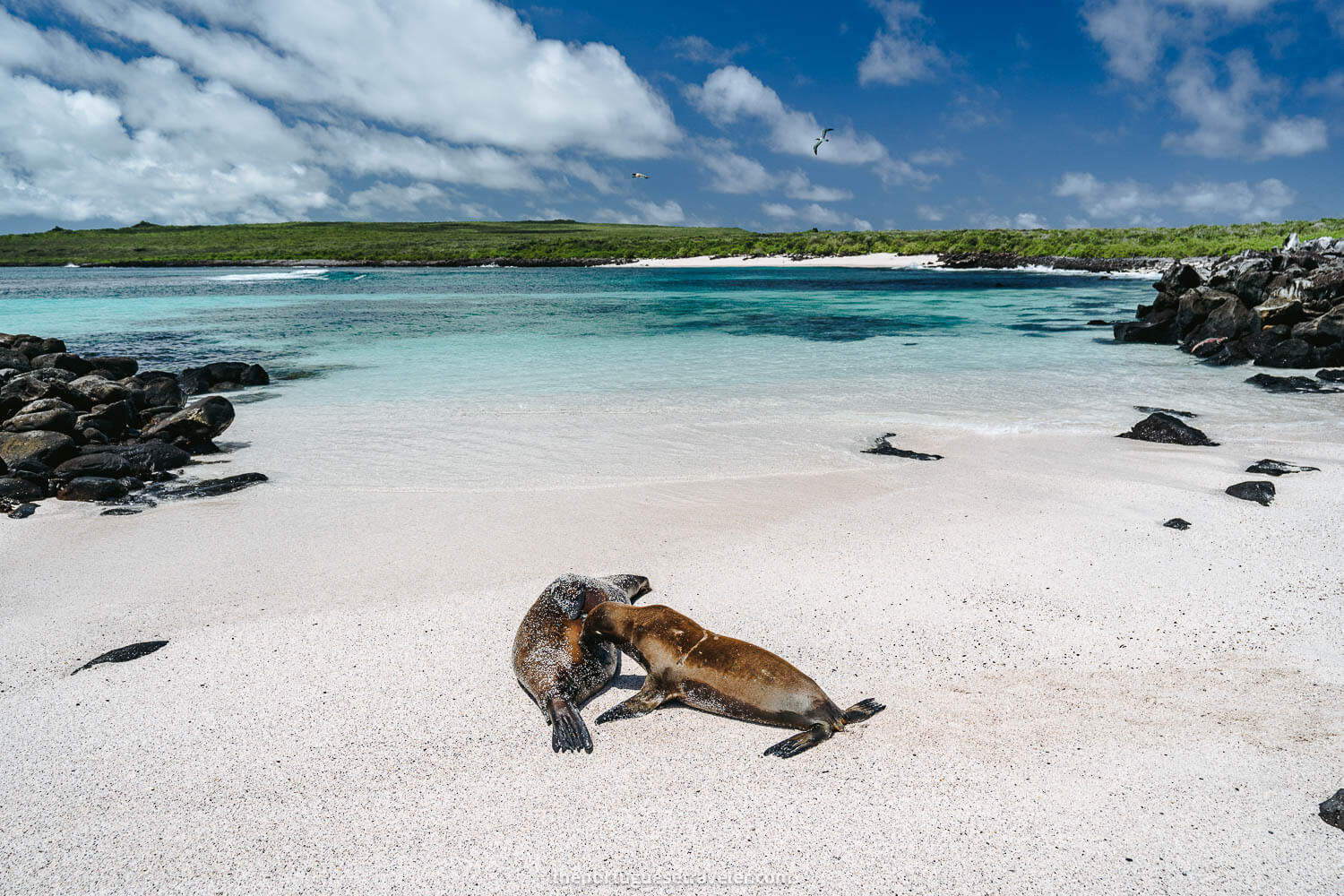
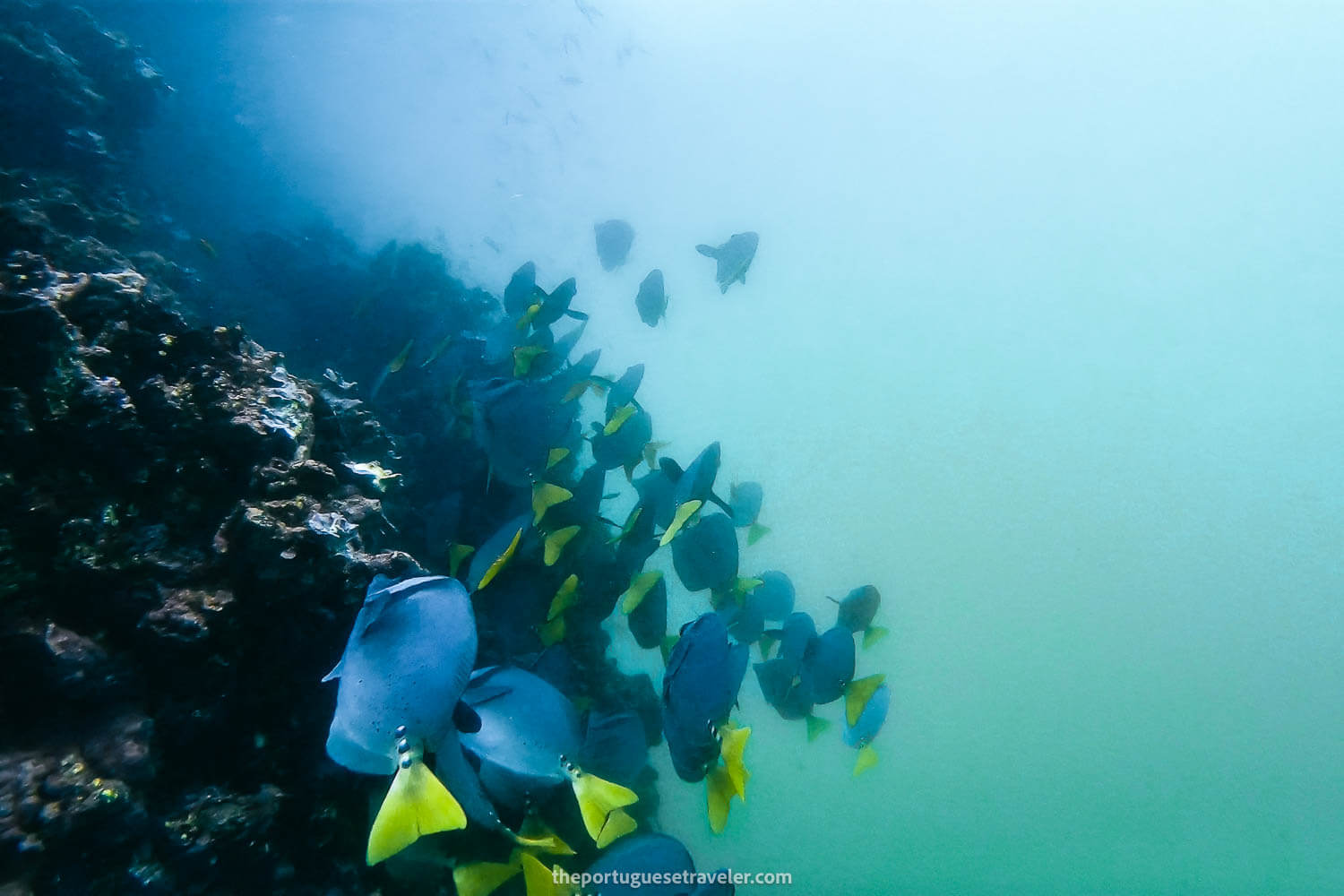
7. CAVE DIVE IN BARRANCO CAVE
And to conclude this list a cave diving in Galapagos. For all diving aficionados, it’s another type of dive you can do in San Cristobal.
According to their website, you will see nudibranchs, many different types of fish, sea stars, and lobsters and you will dive from 23 meters to 34 meters deep (specific certification required probably).
In any case, do contact them if you’d like to try it as I think you can do it as a specialty course.
Check the Cave and Wall Barranco dive on Planet Ocean Galapagos website.
NAVIGATION MENU
CHOOSE YOUR DIVE SITES
DIVING IN GALAPAGOS
SANTA CRUZ ISLAND
8. GORDON ROCKS
The dive in Gordon Rocks is the best of the dive sites in Santa Cruz if you want to see hammerhead sharks. If you’re looking into diving in Galapagos and you’re in Santa Cruz, Gordon Rocks is the place to go. It is the third most famous dive site in the entire archipelago. Only slightly shadowed by the liveaboard experience of Darwin and Wolf’s islands, which cost a small fortune, and the Dive in Kicker Rock, starting from San Cristobal island.
It’s one of the top dives in the world and it’s on the bucket list for many underwater aficionados. As a diver myself, if I’d leave the Galapagos without seeing a hammerhead shark I would be disappointed. This is where I saw my first ten hammerheads and my first manta rays.
View the full blog post here: DIVING IN GORDON ROCKS
To book this tour: Check the local company Macarron Scuba Diver’s website, or book it online on Viator here: Daily diving tour in Gordon Rocks
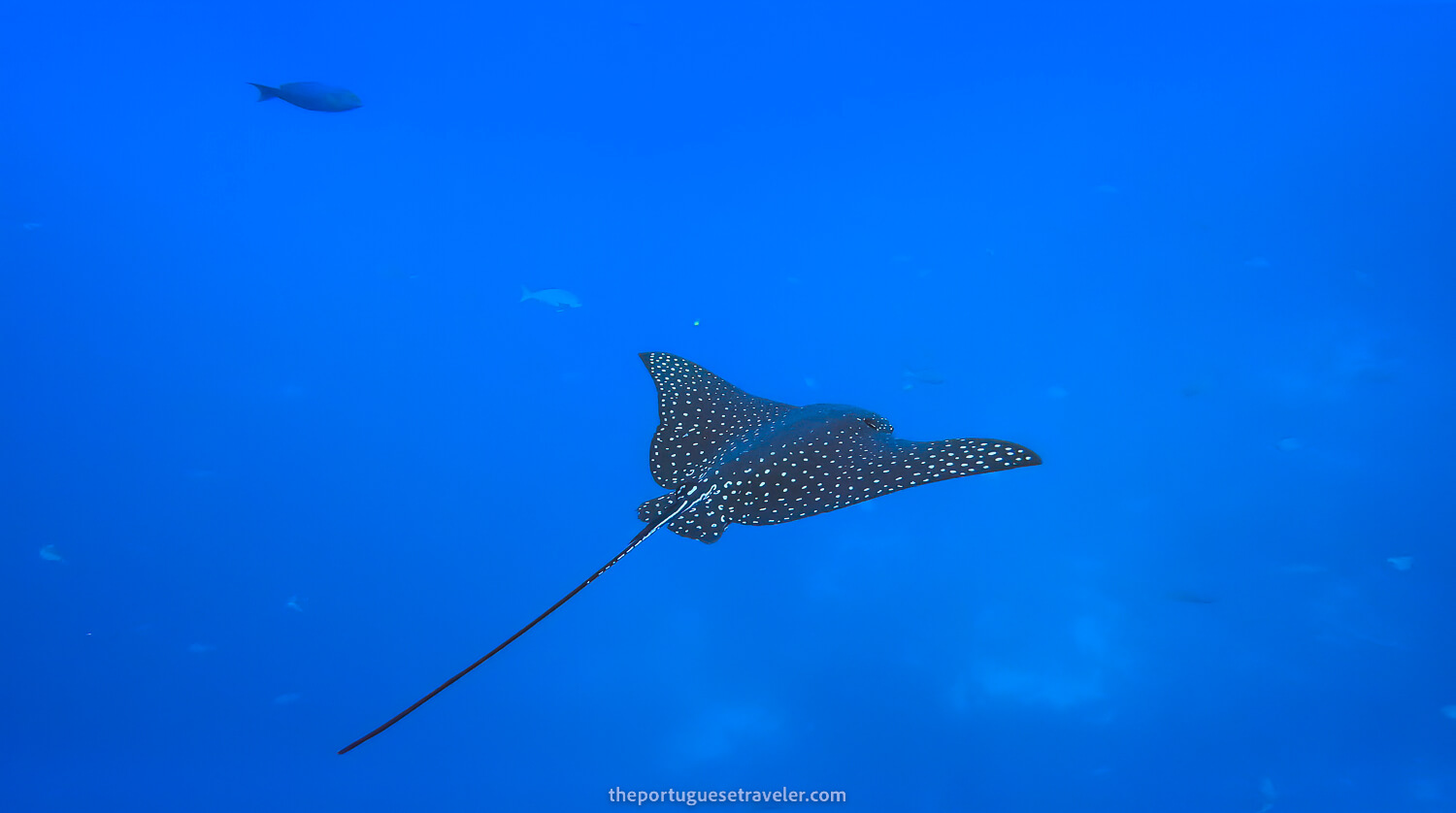
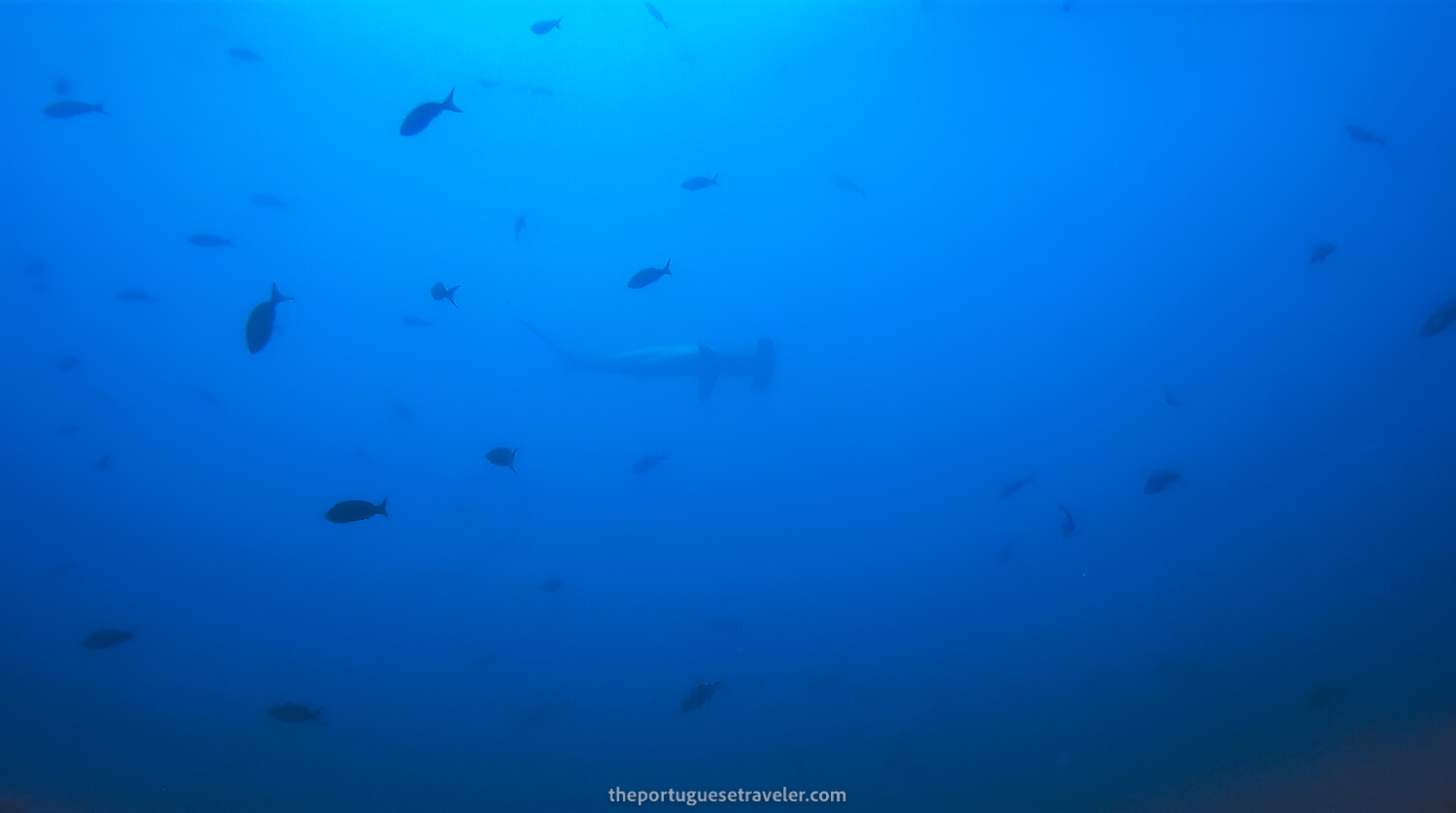

9. PUNTA CARRION
This dive site is just one hour east of the Itabaca channel. It is located on the northernest point of Santa Cruz island and it’s the only dive you can do, from the dive sites in Santa Cruz, that is literally located on the island. Here there are usually no strong currents and for that reason, it is a very nice site for divers from all levels. You have a great chance of diving together with playful baby sea lions and with a tad of luck, you will find sea turtles, eagle rays, hammerheads, and dolphins.
To book this tour: Check the local company Macarron Scuba Diver’s website
10. NORTH SEYMOUR ISLAND
The North Seymour dive site is usually combined together with other islets in the near like, Mosquera or Daphne Minor. If you want to continue diving in Galápagos after the main Kicker and Gordon Rocks dive then I advise you to try this one. North Seymour island is located on the north part of Santa Cruz island, over Baltra island (aka South Seymour island). From the dive sites in Santa Cruz, I’ve done this one together with Mosquera islet and Gordon Rocks.
Both North and South Seymour Islands were named after the British royal navy officer of the late 18th century, Admiral Lord Hugh Seymour. In North Seymour, you can find an eel garden, some reef sharks resting on the sandy bottom, and morays. If you’re lucky some eagle and manta rays, and some Hammerhead sharks might pass near (i saw a hammerhead there). North Seymour is usually the check dive before the other islets where strong currents are more common.
View the full blog post here: DIVING IN NORTH SEYMOUR AND MOSQUERA
To book this tour: Check the local company Macarron Scuba Diver’s website
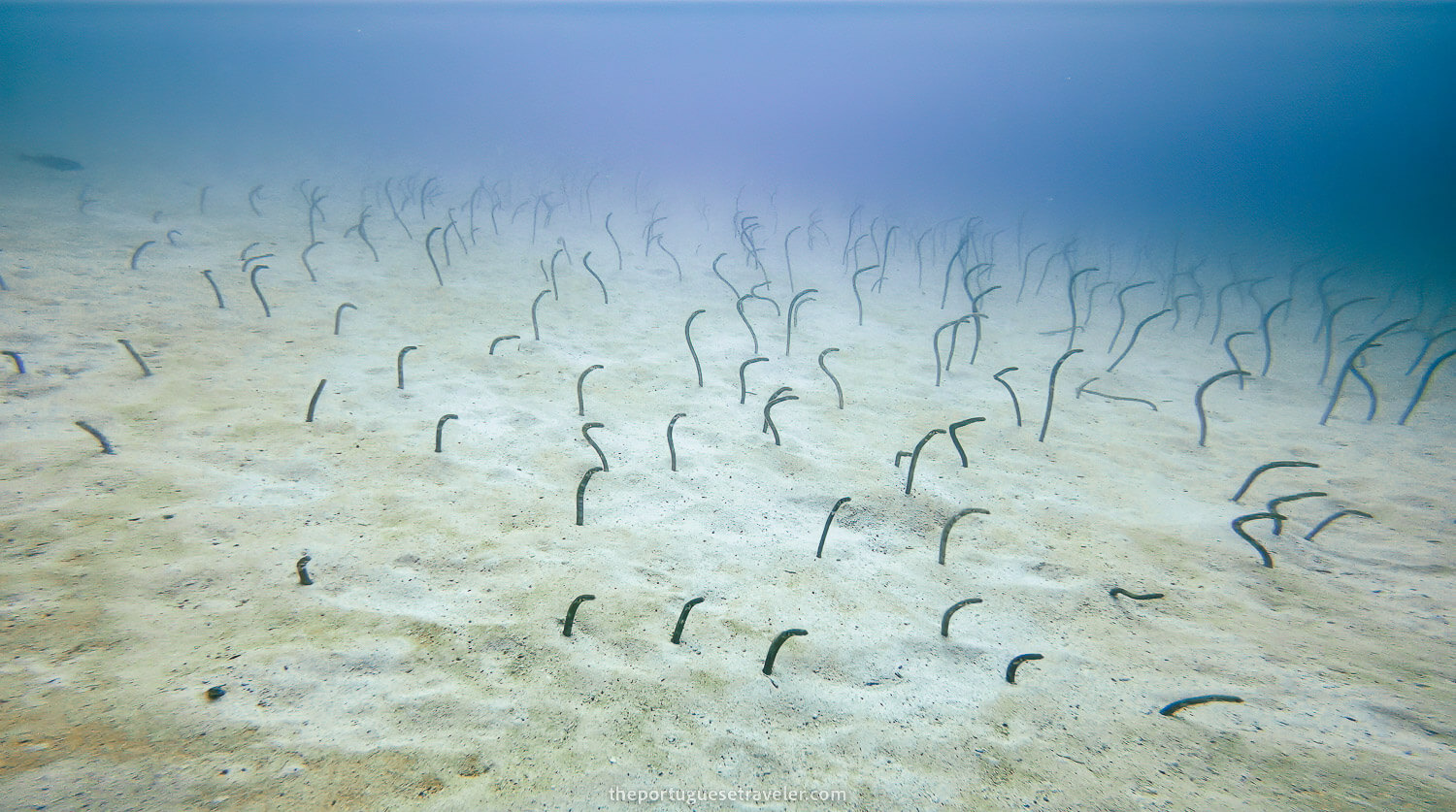
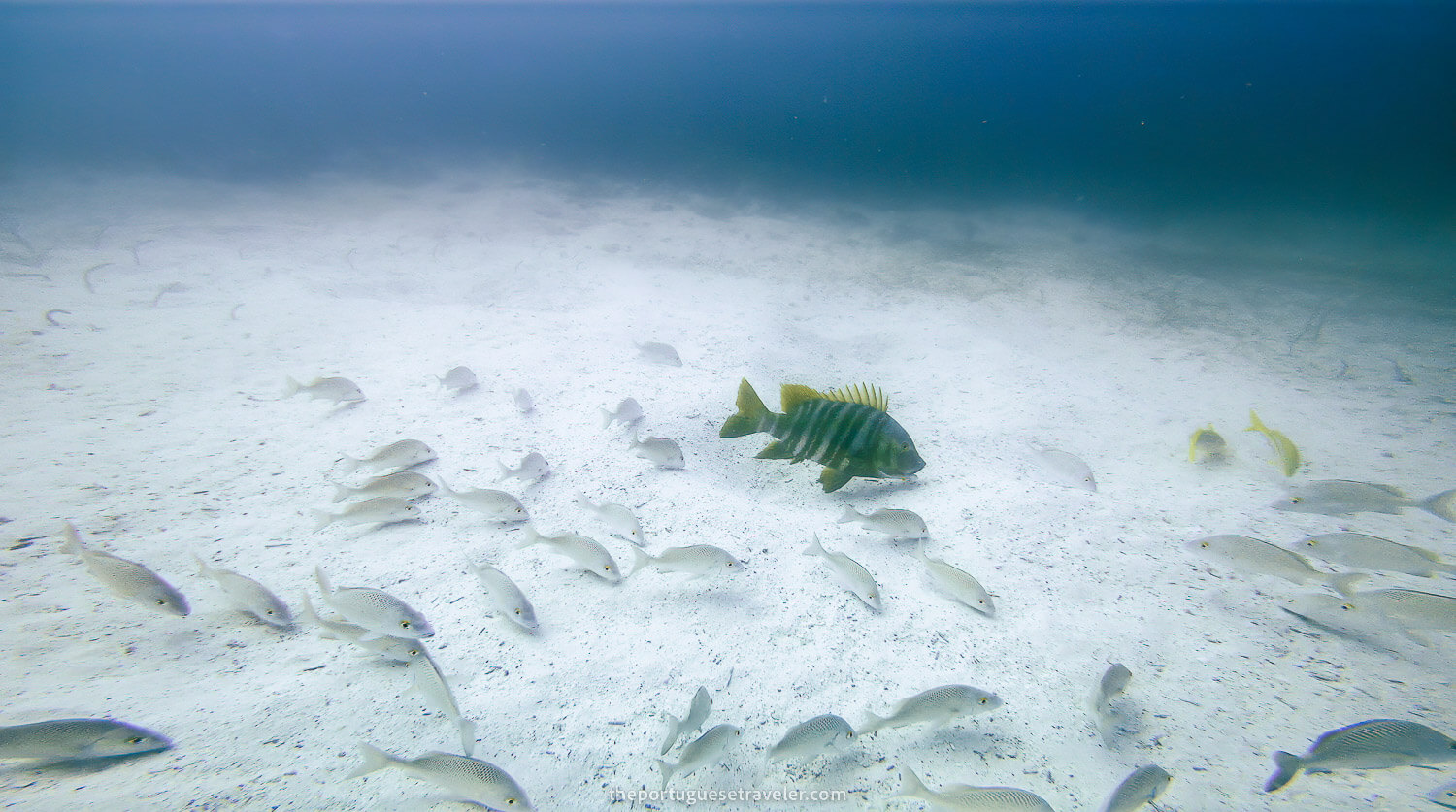
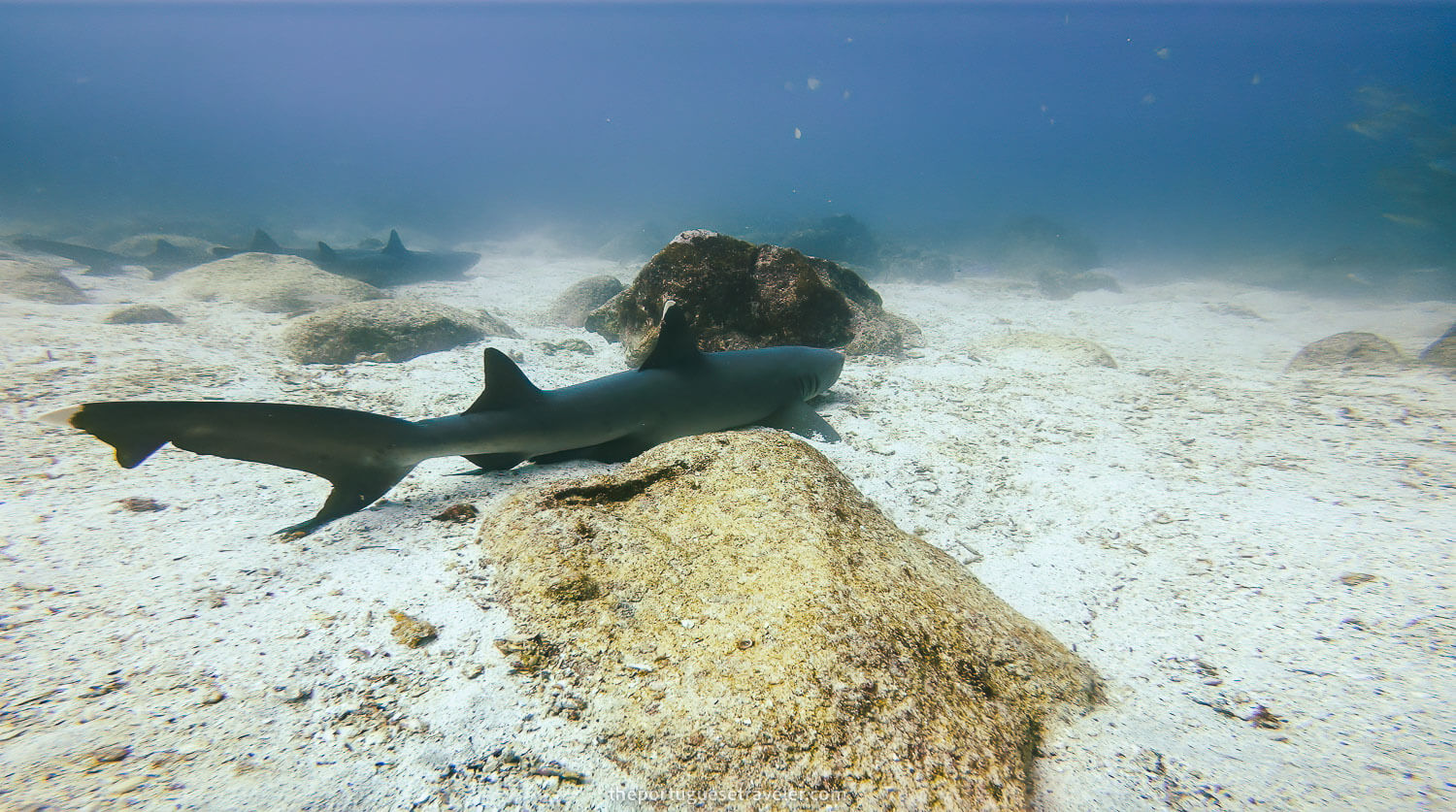
11. MOSQUERA ISLET
Mosquera islet is located north of Santa Cruz island, in between the North and South Seymour islands. The name “Mosquera” comes from the Spanish and it is the name of a flower in the daisy family, the yellow fleabane flower. It is a dive where there are usually strong currents.
In Mosquera, you will for sure see a reef shark cleaning station and a sea of starfish. If you’re lucky you might spot hammerhead sharks, green turtles, eagle rays, manta rays, golden cownose rays (we saw a group of 15), giant puffer fish, king angelfish, blue and gold snappers, razor surgeonfish, and other beautiful fish. Totally a dive you should do if you’ve already done the Gordon Rocks dive and you want to keep diving in Galapagos. Here you will have a lot of diversity and fun.
View the full blog post here: DIVING IN NORTH SEYMOUR AND MOSQUERA
To book this tour: Check the local company Macarron Scuba Diver’s website
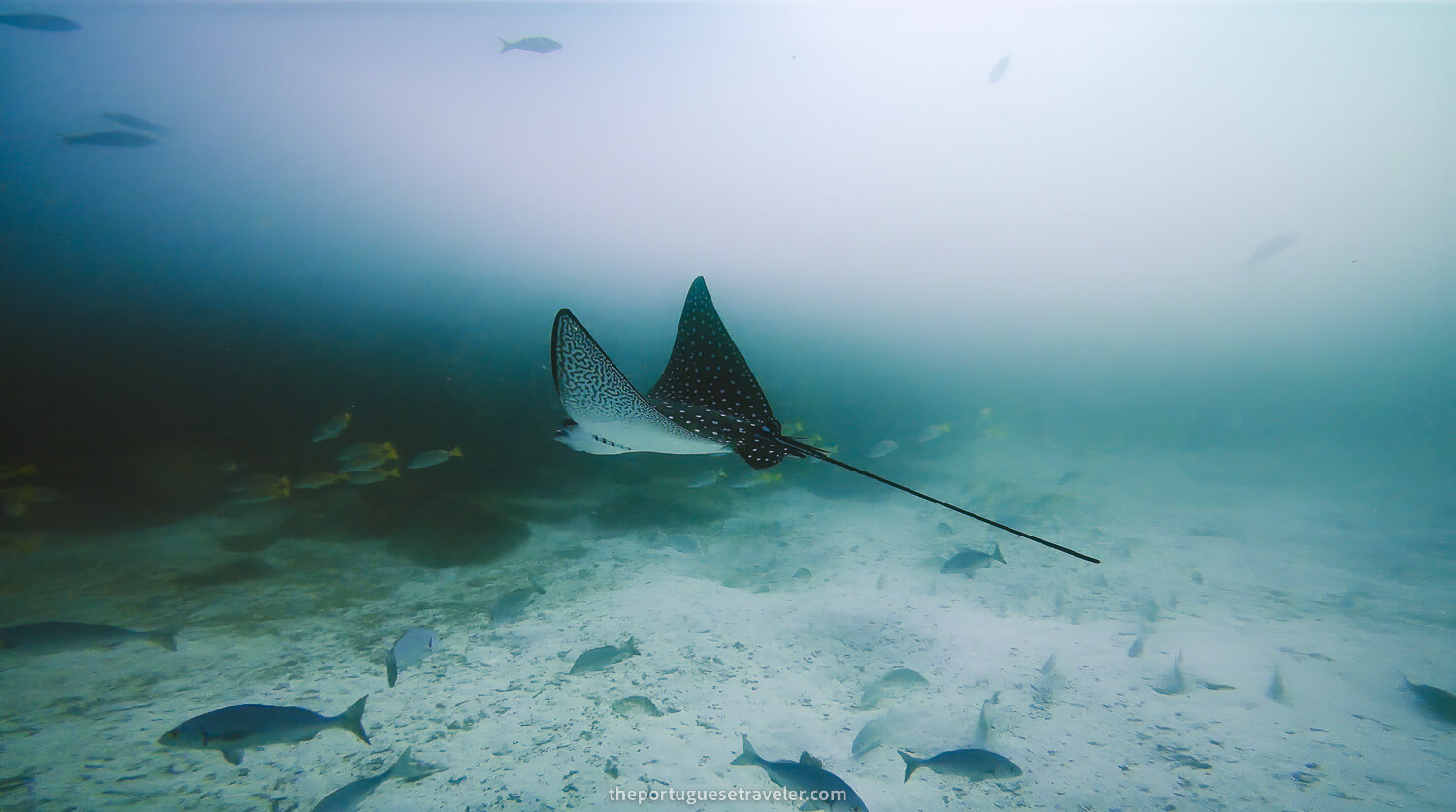
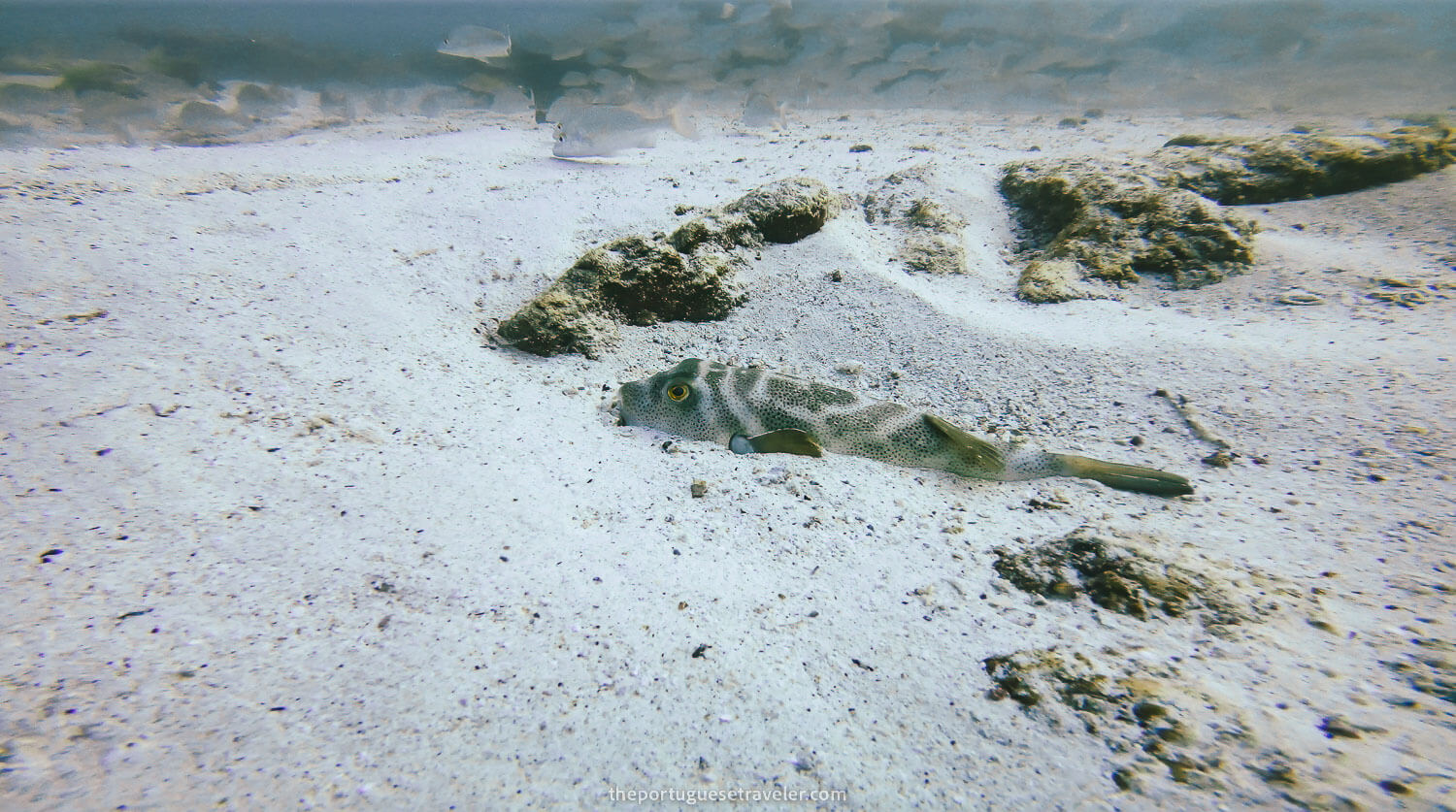
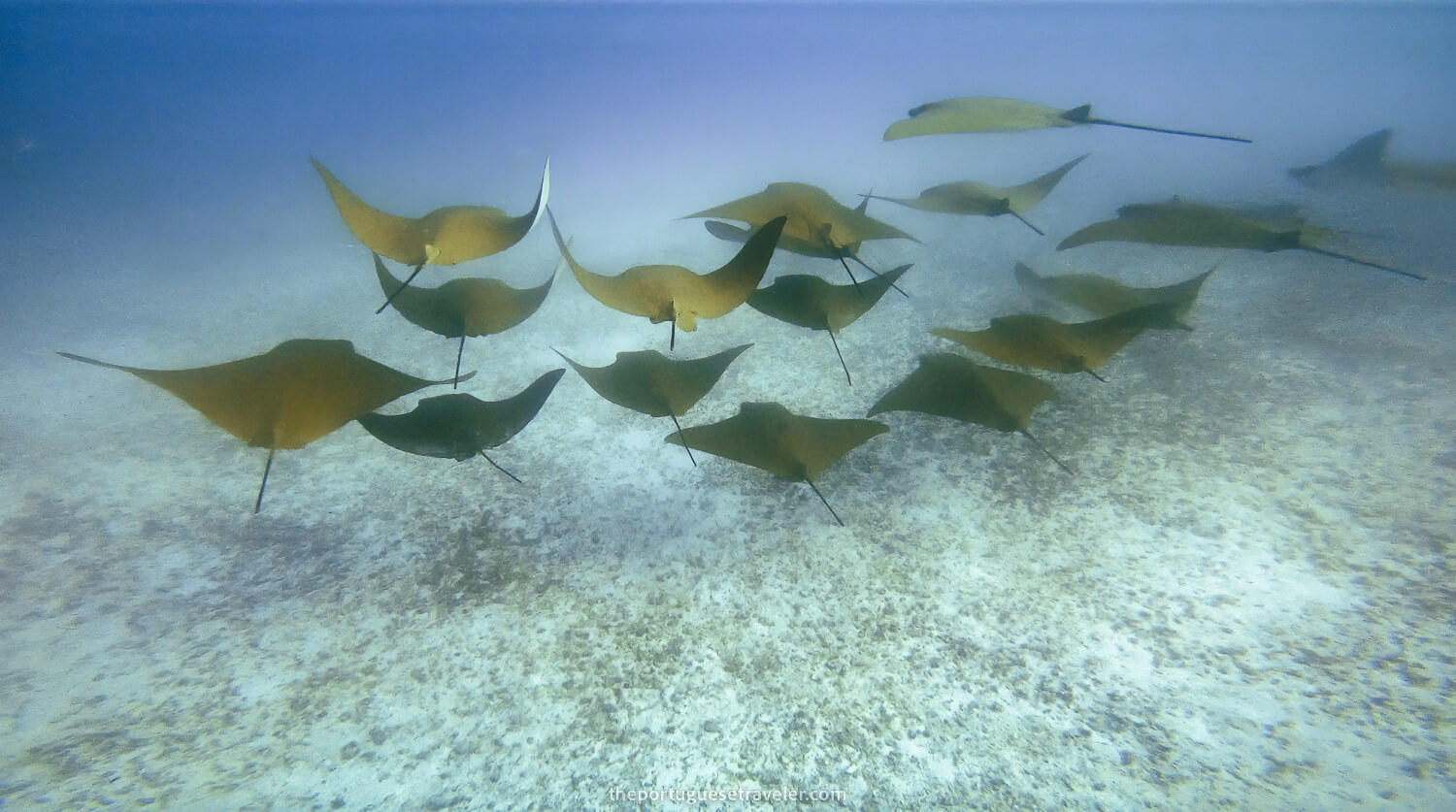
12. BARTOLOMÉ ISLAND AND COUSIN ROCK
Bartolomé Island is the most iconic photo you can have of the Galapagos islands and it is located northwest of Santa Cruz island. Bartolomé is a volcanic tuff islet on the east side of Santiago island. The journey there takes 90 minutes by speedboat and two hours by sailing boat (like on the day land tour).
The name of the island comes from Charles Darwin’s friend Bartholomew James Sullivan who was the principal surveyor and second lieutenant aboard the HMS Beagle. As in the land tour, you could spot some penguins, here you might swim with them and also spot some starfish.
Here as in many places in the Galapagos, you will be able to see reef sharks, and tropical reef fish such as the yellow-tailed surgeonfish, with luck you might spot some mobula rays, seahorses, and other sharks. It is a great tour to do a two-in-one check, the only hiccup is not climbing to the viewpoint for the most iconic perspective of the island. On this tour, you will also dive at the Cousin Rock dive site.
To book this tour: Check the local company Macarron Scuba Diver’s website
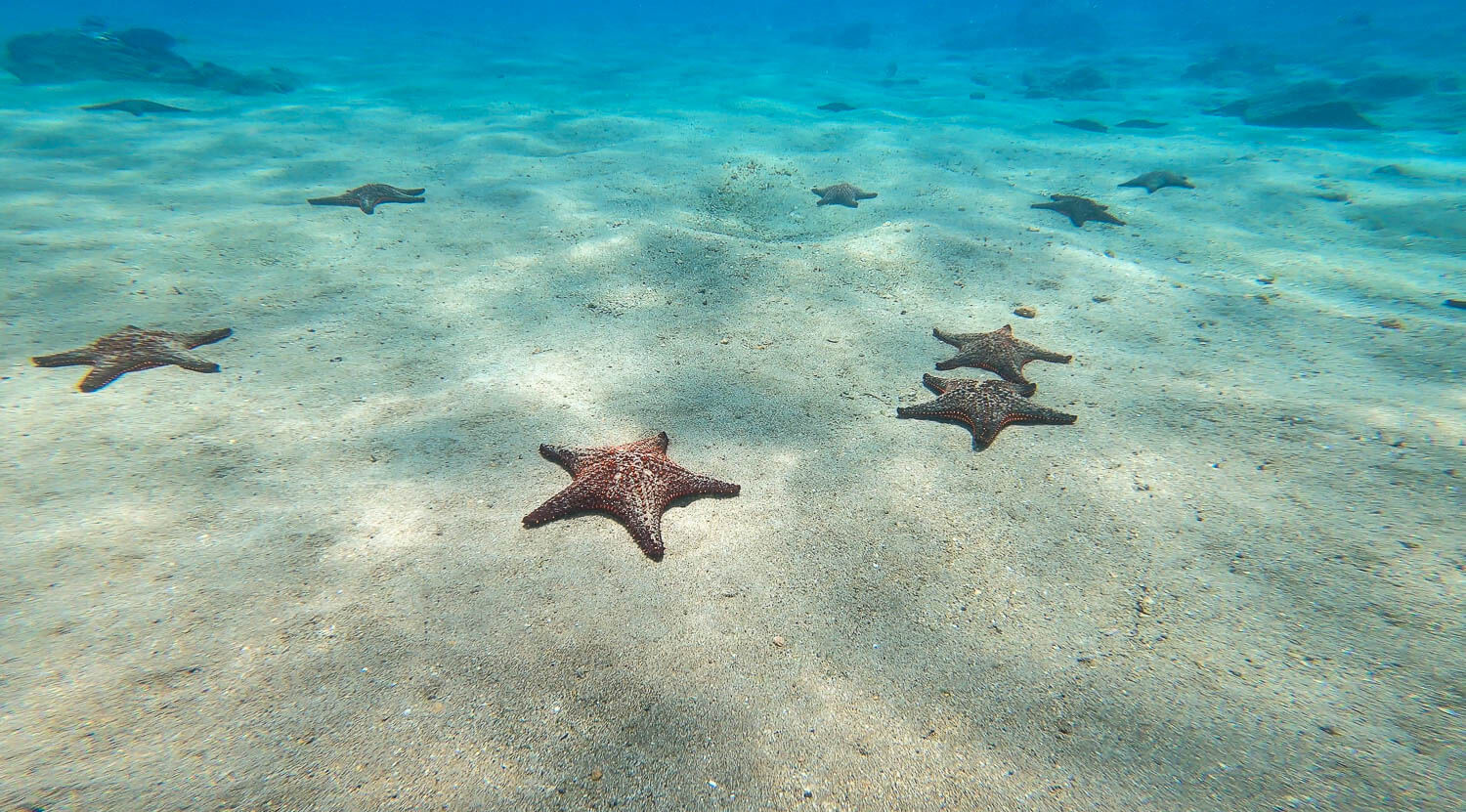
13. DAPHNE ISLANDS
There are three main dive sites in the Daphne islands, Daphne Mayor (10-40m depth), Daphne Minor (5-30m depth), and Bajo de Daphne (5-25m depth). The diving tour in Daphne Islands is usually combined together with a dive in North Seymour or Mosquera islet.
Depending on your dive site you might find a small cave (not a cave dive) with reef sharks, a pinnacle with a variety of rays, Galapagos sharks, green turtles, tropical fish, and schools of barracudas, among other animals. If you are not a certified diver there is also a snorkeling tour available where you fish your own lunch and can spot many seabirds fishing with sea lions.
To book this tour: Check the local company Macarron Scuba Diver’s website
14. FLOREANA ISLAND
On Floreana, you can scuba-dive in four different sites, Punta Cormoran, Enderby islet, Devil’s Crown islet, and Champion islet.
At Punta Cormoran the main attractions are batfish, golden rays, Galapagos sharks, barracudas, eagle rays, and green turtles. In Enderby, the dives take place at the extreme edge where the currents hit the reef and if you’re extremely lucky you might find Whale sharks. In Devil’s Crown, the highlight is to see an endemic coral, the cleaning station, Galapagos sharks, and white-tip reef sharks. At the Champion islet, you’re accompanied by a large group of sea lions during the entire dive.
If apart from diving in Galapagos you’re interested in the day trip and land tour to Floreana island the article underneath might help you.
View the full blog post here: FLOREANA ISLAND TOUR
To book this tour: Check the local company Macarron Scuba Diver’s website
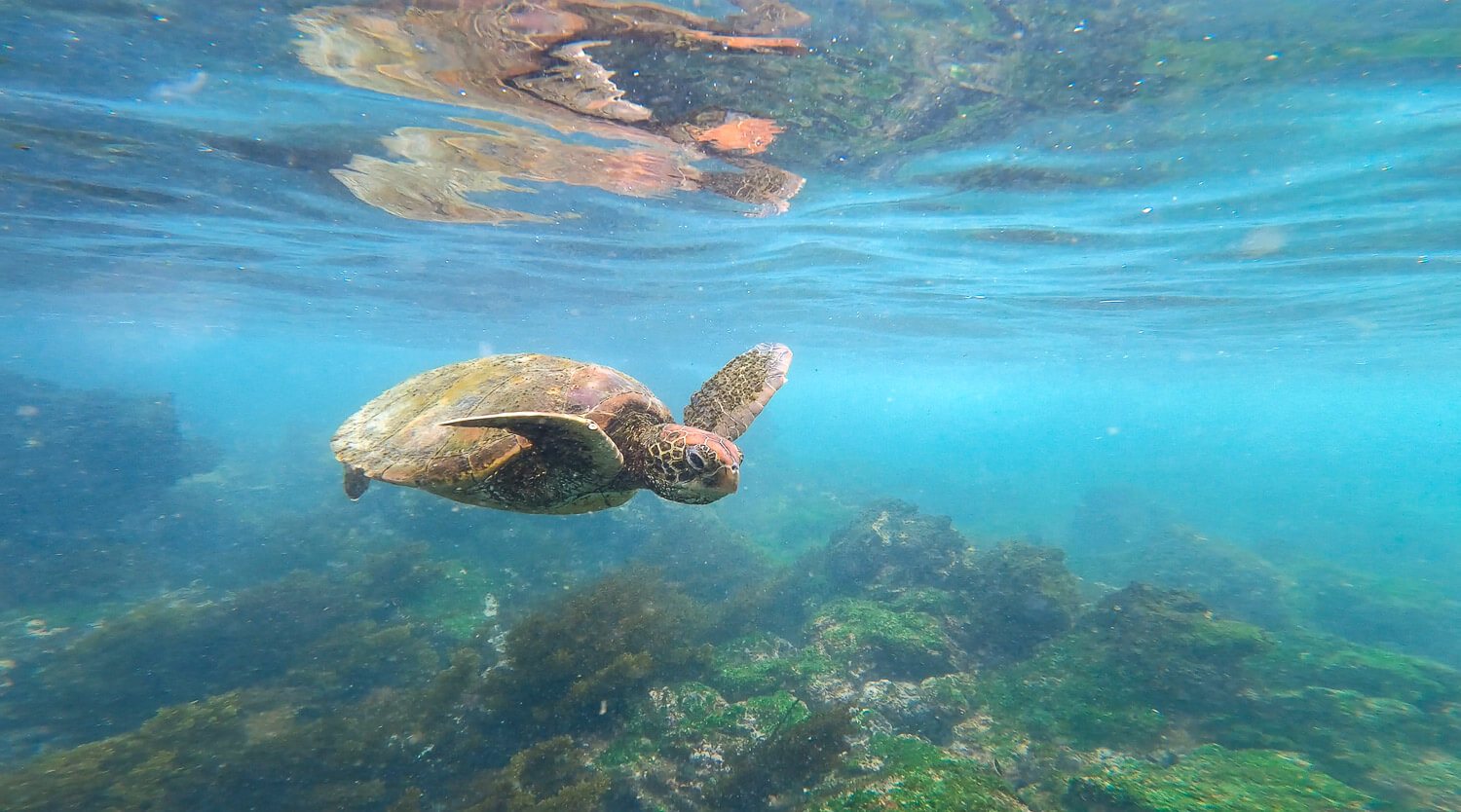
15. PLAZA ISLETS
These are two of the many uninhabited islets in the Galapagos. They were formed by an uplift of the seabed giving it its flat but very unique shape and are located on the northeastern side of Santa Cruz island. Apart from diving in the Plaza islets you can also do a land-based tour with snorkeling.
Here the dives are usually between 15 and 18 meters in depth, you can see an eel garden and bigger pelagic species like rays, sharks, and green turtles. The dive is fit for all kinds of level as there isn’t usually strong currents on site. If you’re lucky you will also able to dive with playful sea lions.
To book this tour: Check the local company Macarron Scuba Diver’s website
16. SANTA FÉ ISLAND
And to conclude the list of dive sites in Santa Cruz here’s another one that takes you all the way to Santa Fé island, one of the biggest islands in the Galapagos, that it’s located just 20 km away from Santa Cruz.
Santa Fé has three different dive sites, the Tip, the Arc, and the Cliff. The visibility is usually over 10 meters and it can get to 20-25 meters. Here the waters are of gorgeous turquoise color and are usually very calm, for which it is a good recommendation to do your diving certification here.
To book this tour: Check the local company Macarron Scuba Diver’s website
NAVIGATION MENU
CHOOSE YOUR DIVE SITES
DIVING IN GALAPAGOS
ISABELA ISLAND
17. TORTUGA ISLAND
Tortuga Island dive tour is the most famous and only tour you can do on Isabela island that doesn’t depend on a cruise. So if you’re land-based, only have time for Isabela island, want to have a deep experience while diving in Galapagos, Tortuga island is your place. If you want to be surrounded by hammerheads and manta rays, this is the spot.
This is a small islet located in the southeast of Puerto Villamil town, roughly 45 minutes away by speed boat and it has a shape of a half-moon clearly being the crater’s rim of an extinct volcano.
To book this tour: Check the local company Pahoehoe Galapagos and Galapagos Isabela Dive Center (they have mostly good reviews, but since I didn’t do any tour with these companies I would recommend you take your own conclusions).
18. CAPE MARSHALL
Cape Marshall dive is a wall dive on the northeastern coast of Isabela island. This dive and the next two are usually done after diving in Darwin and Wolf islands on a liveaboard and you can’t do them from Puerto Villamil, but they are still dive sites in Isabela, Galapagos therefore I’ve listed them here.
There is usually moderate to heavy current, and the dive is done as a drift dive following the coast. Here as usual in the Galapagos, you have a great chance on seeing hammerhead sharks and manta rays.
To book this tour: Check out the Cape Marshall dive site page on the company Galapatours’s website (they have mostly good reviews, but since I didn’t do any tours with them I would recommend you take your own conclusions).
19. PUNTA VICENTE ROCA
The dive in Punta Vicente Roca or Vicente Rock Point is usually done on your way back from Darwin and Wolf islands on the liveaboard and it’s located on the northwest of Isabela island. It is a cold and steep, deep vertical wall covered in coral, sponges, and black coral. You have a great chance of seeing mola molas, sea horses, bullhead sharks, batfish, sea lions, whales, and blue-footed boobies fishing.
Due to its cold currents, it’s an amazing site to watch the feeding frenzies of all these amazing species.
To book this tour: Check out the Punta Vicente Roca dive site page on the company Galapatours’s website (they have mostly good reviews, but since I didn’t do any tours with them I would recommend you take your own conclusions).
20. ROCA BLANCA
Roca Blanca or White Rock dive site is located on the Southeast coast of Isabela island and according to Galapatours, it’s the secret mecca of the Galapagos, here you can see six different species of shark, manta and eagle rays, sea lions, morays, lobsters, and many tropical fish.
To book this tour: Check out the Rosa Blanca dive site page on the company Galapatours’s website (they have mostly good reviews, but since I didn’t do any tours with them I would recommend you take your own conclusions).
21. COWLEY ISLET
The last dive on this list is the dive in the Cowley Islet (also part of a live-aboard experience).
It’s located on the East coast of Isabela island between Isabela and Santiago islands and you’ll probably find here different shark species, sea lions, stingrays green turtles, penguins, and manta rays.
To book this tour: Check out the Cowley Islet dive site page on the company Galapatours’s website (they have mostly good reviews, but since I didn’t do any tours with them I would recommend you take your own conclusions).
NAVIGATION MENU
CHOOSE YOUR DIVE SITES
DIVING IN GALAPAGOS
CRUISES & LIVEABOARDS
22. FERNANDINA ISLAND
The dive site of Fernandina Island is called Cape Douglas and it’s located on the northeast side of the island.
Such as most of the dives on Isabela island, this dive can only be done while on a cruise. Since there is only one spot on the island where you can dive it won’t have an entire category of Fernandina dive sites here on the blog.
On this dive, one of the best attractions is diving with marine iguanas that went feeding under the rocks. You also be able to spot on the surface flightless cormorants and Galapagos penguins. If you’re lucky you might spot red-lipped batfish, bullhead sharks, mola mola, and if you’re in the season you might find sometimes Baleen Whales.
To book this tour: Check out the Cape Douglas dive site page on the company Galapatours’s website (they have mostly good reviews, but since I didn’t do any tours with them I would recommend you take your own conclusions).
23. DARWIN ISLAND
And finally the two most famous places, and the dream dive of all the scuba divers in the world who come diving in Galapagos, Darwin Island. Named after the famous Charles Darwin. On this island, you have two main dive sites. One is called Darwin’s Towers (previously Darwin’s Arch) and the other is Darwin’s Main Island dive site.
Darwin and Wolf’s islands are the most remote islands of the Galapagos archipelago. They are located 160 km (100 miles) northwest of Isabela island, and they are most famous for diving expeditions.
The most famous characteristic of these islands is the huge amount of hammerhead sharks you can find underwater due to the remote location and currents passing through these islands the hammerheads just delight themselves in their surroundings.
Apart from the massive amount of hammerheads, you will also see many rays, eagles, and manta rays, and there’s a great chance of seeing whale sharks too.
This is without a doubt one dive site on my bucket list that I will for sure do before I die.
On Galapatours’s page, the prices of liveaboards range roughly from 4000 to 7000$ USD and last between 8 and 11 days respectively.
To book this tour: Check out the Darwin Island dive site page on the company Galapatours’s website (they have mostly good reviews, but since I didn’t do any tours with them I would recommend you take your own conclusions).
24. WOLF ISLAND
Wolf Island is, together with Darwin island, the most remote group of islands of the archipelago and a Mecca for diving in Galápagos. Here you have 6 different dive sites. The Cave, The Landslide, The Shark Bay, The Pinnacle, North Islet, and The Anchorage.
Most of the dives on the liveaboard are done on Wolf Island. This island was named after the German geologist Theodor Wolf. Apart from the sights that you also have under Darwin Island, like hammerheads and rays, here there’s a great chance of seeing whales, dolphins, and whale sharks.
On land, you will be able to spot sea lions, frigate birds, different boobies, marine iguanas, and the famous vampire finch.
To book this tour: Check out the Wolf Island dive site page on the company Galapatours’s website (they have mostly good reviews, but since I didn’t do any tours with them I would recommend you take your own conclusions).
THINGS TO DO IN THE GALAPAGOS
ALL THE ARTICLES ABOUT THE GALAPAGOS
San Cristobal Island – The easternmost island of the Galapagos, the “Isla Bonita”
Santa Cruz Island – The island with the best tourism infrastructure.
Isabela Island – The most adventurous and less explored island of the main three.
